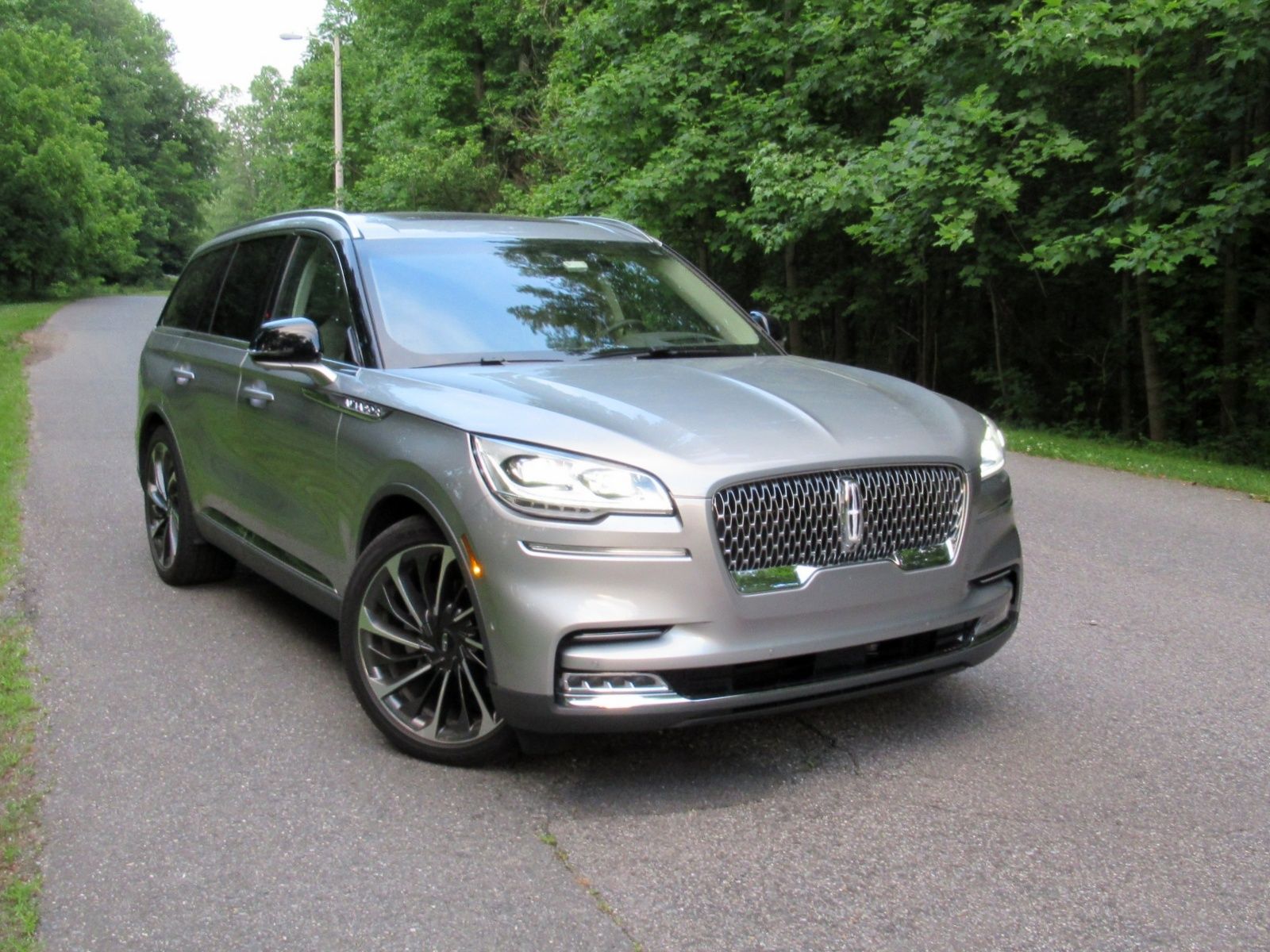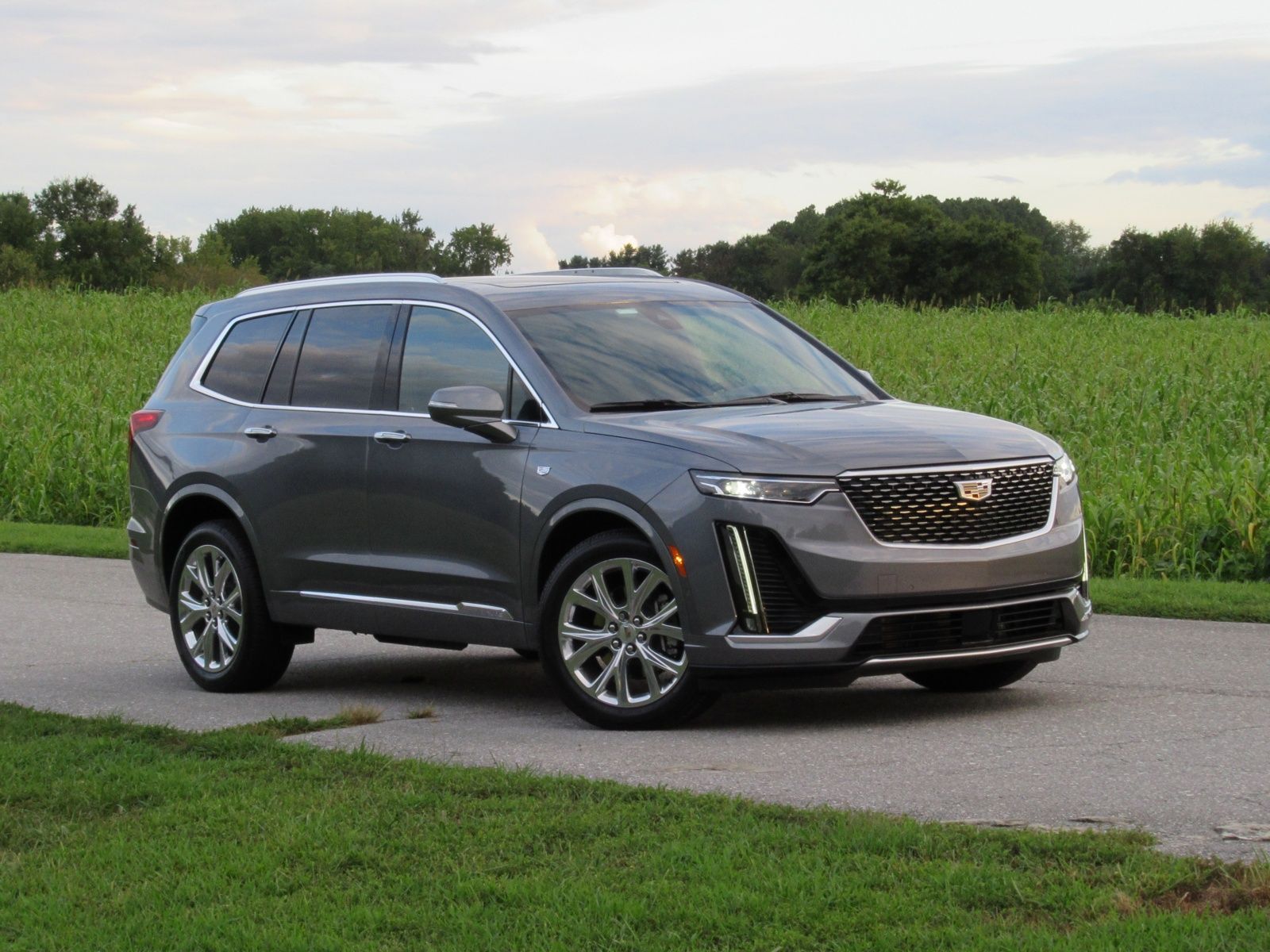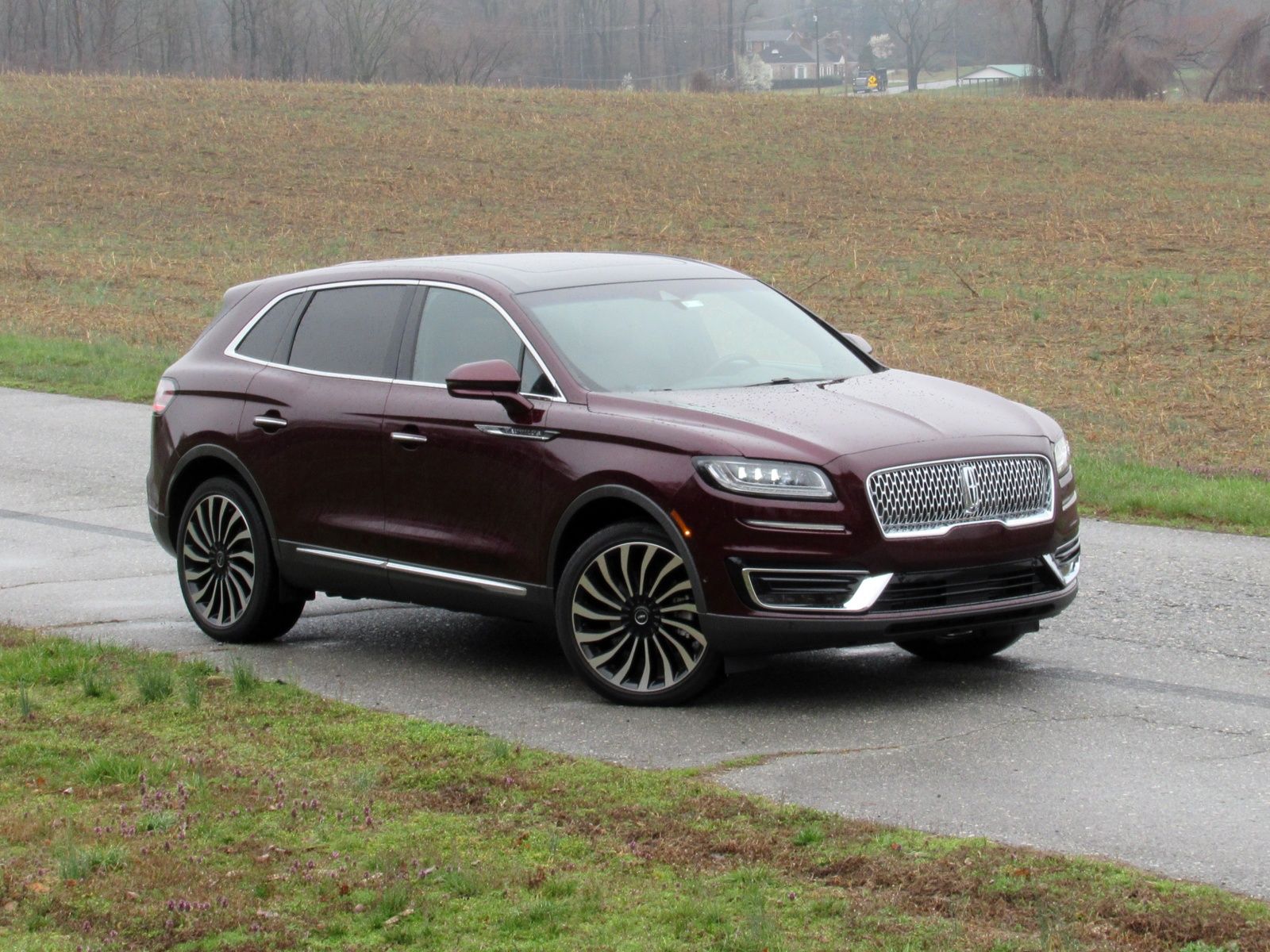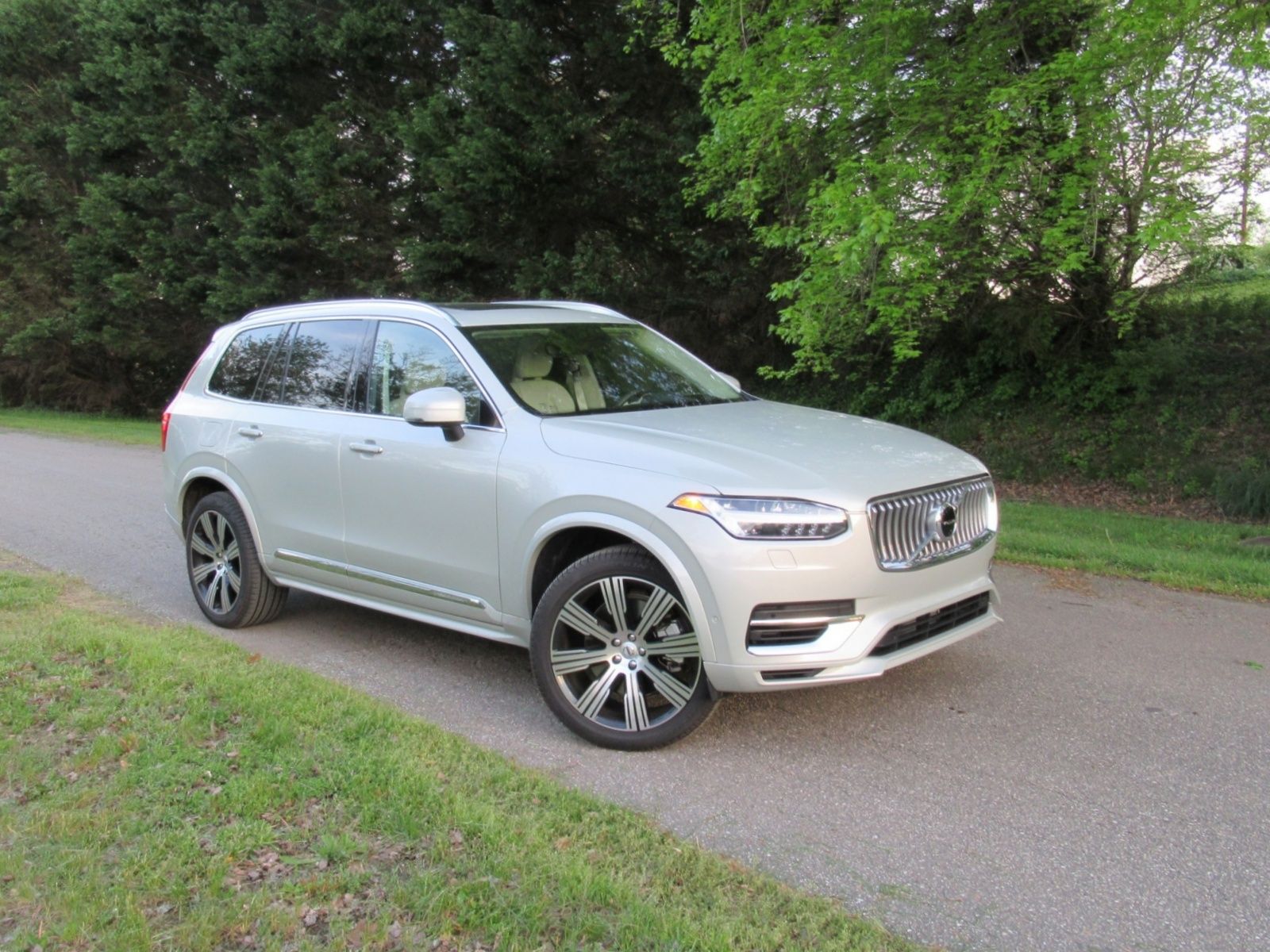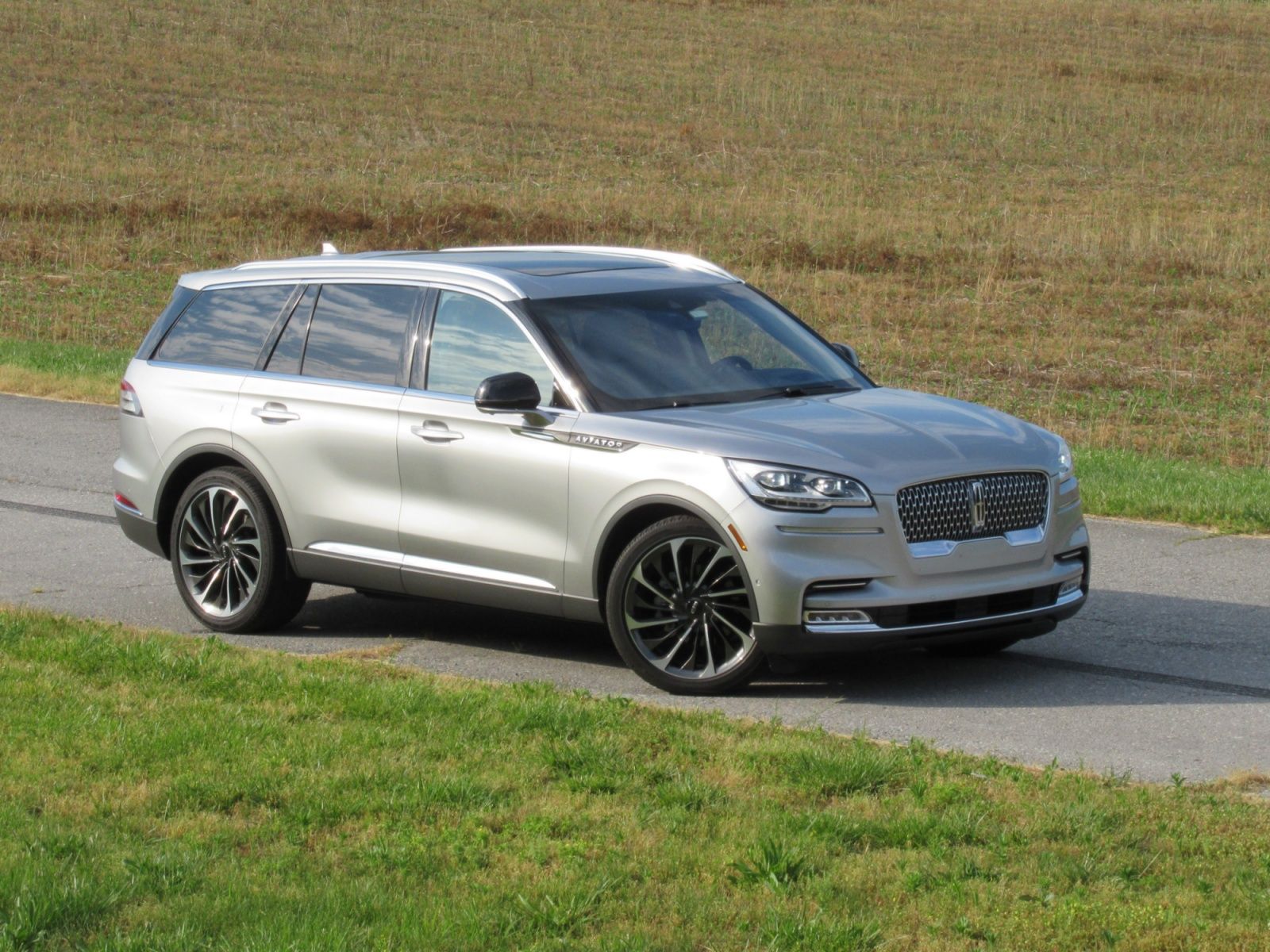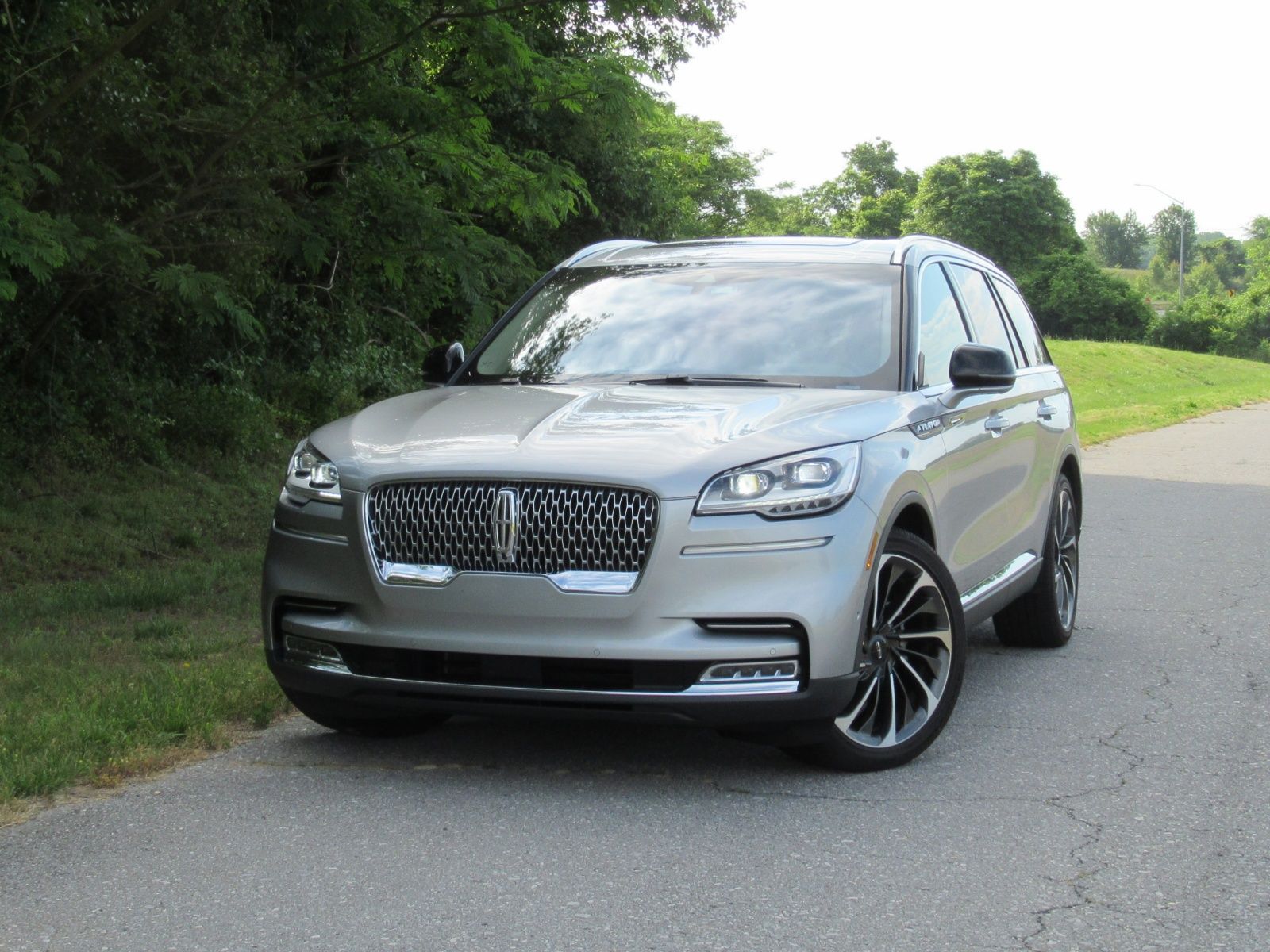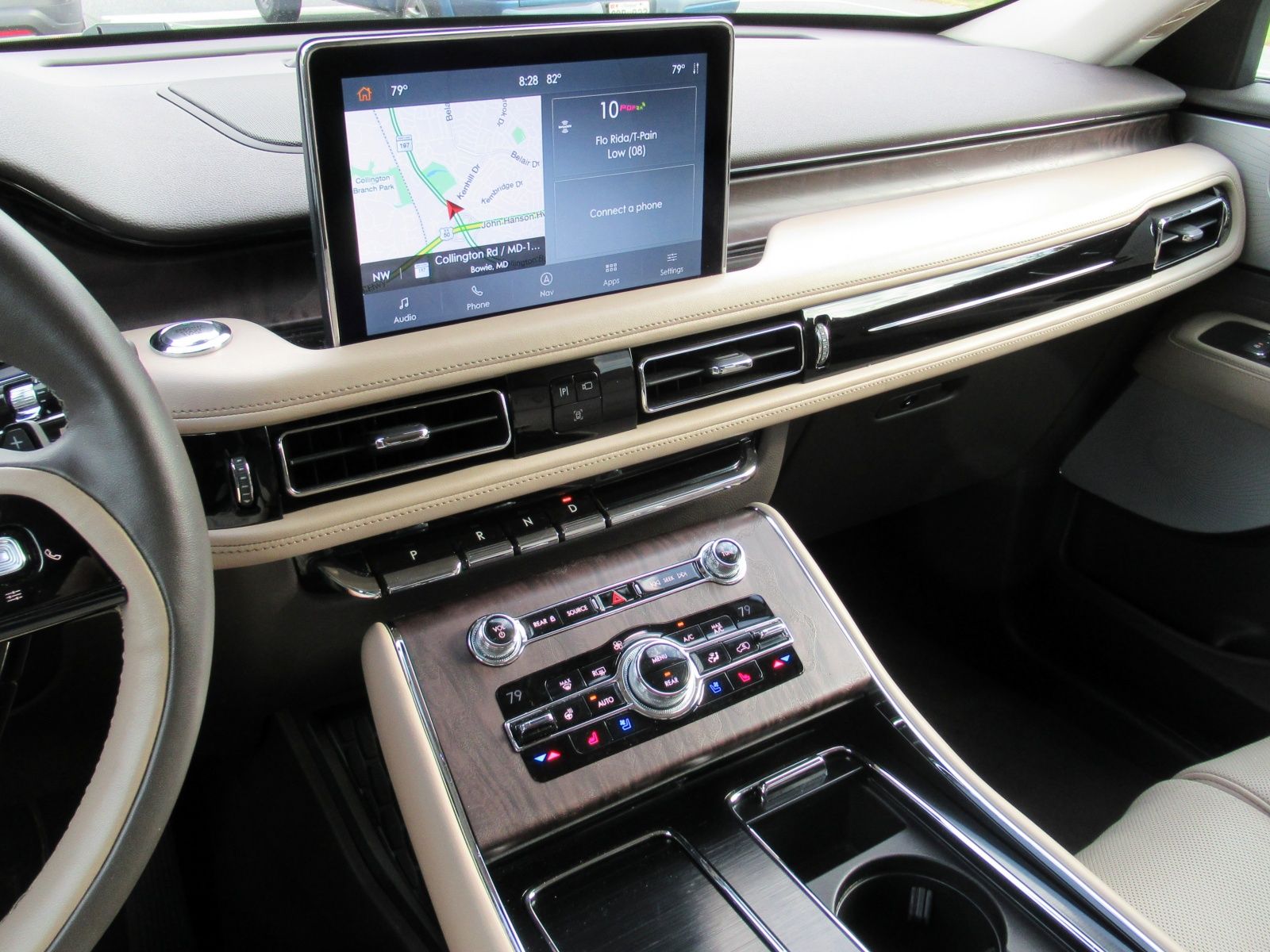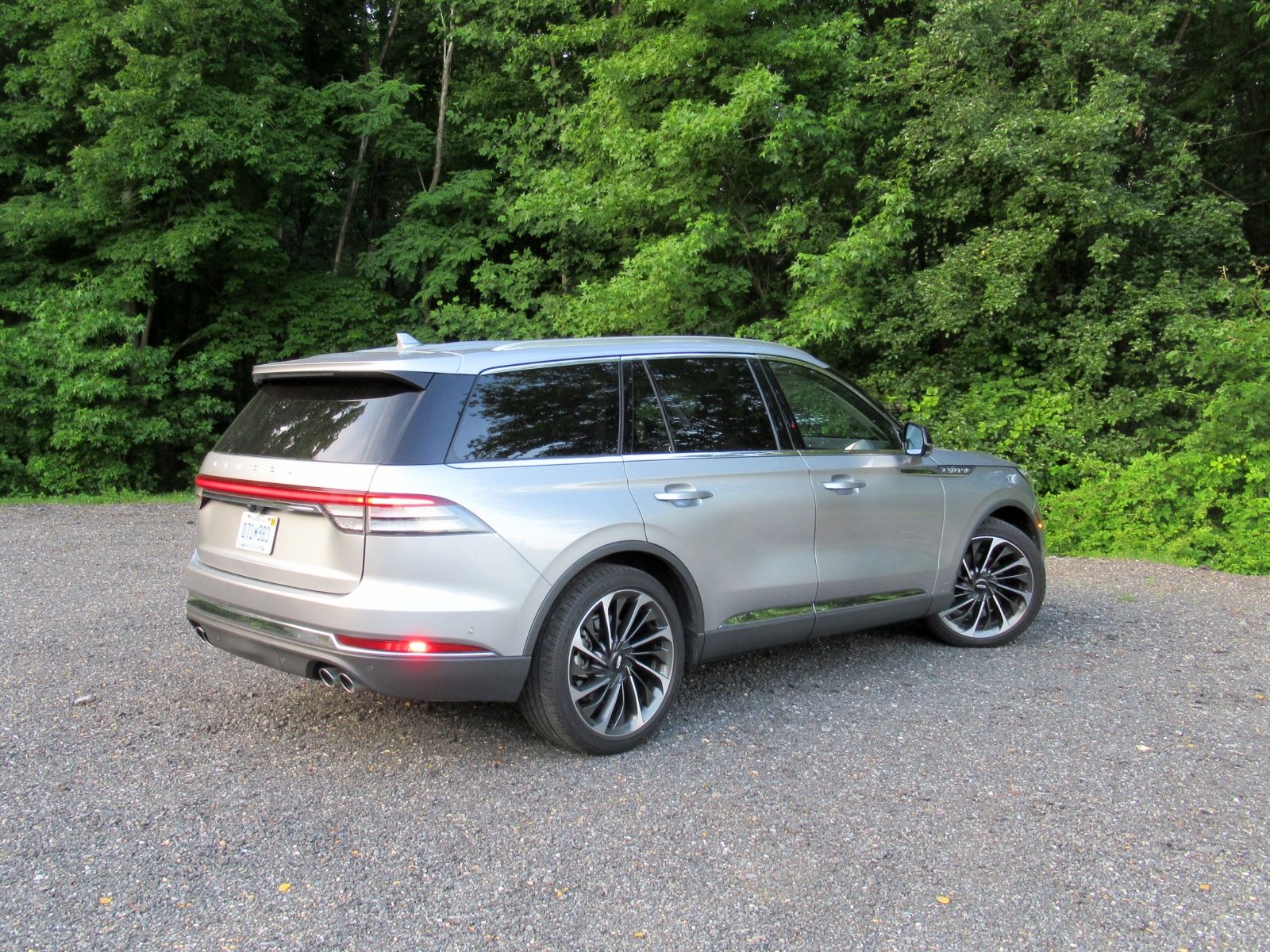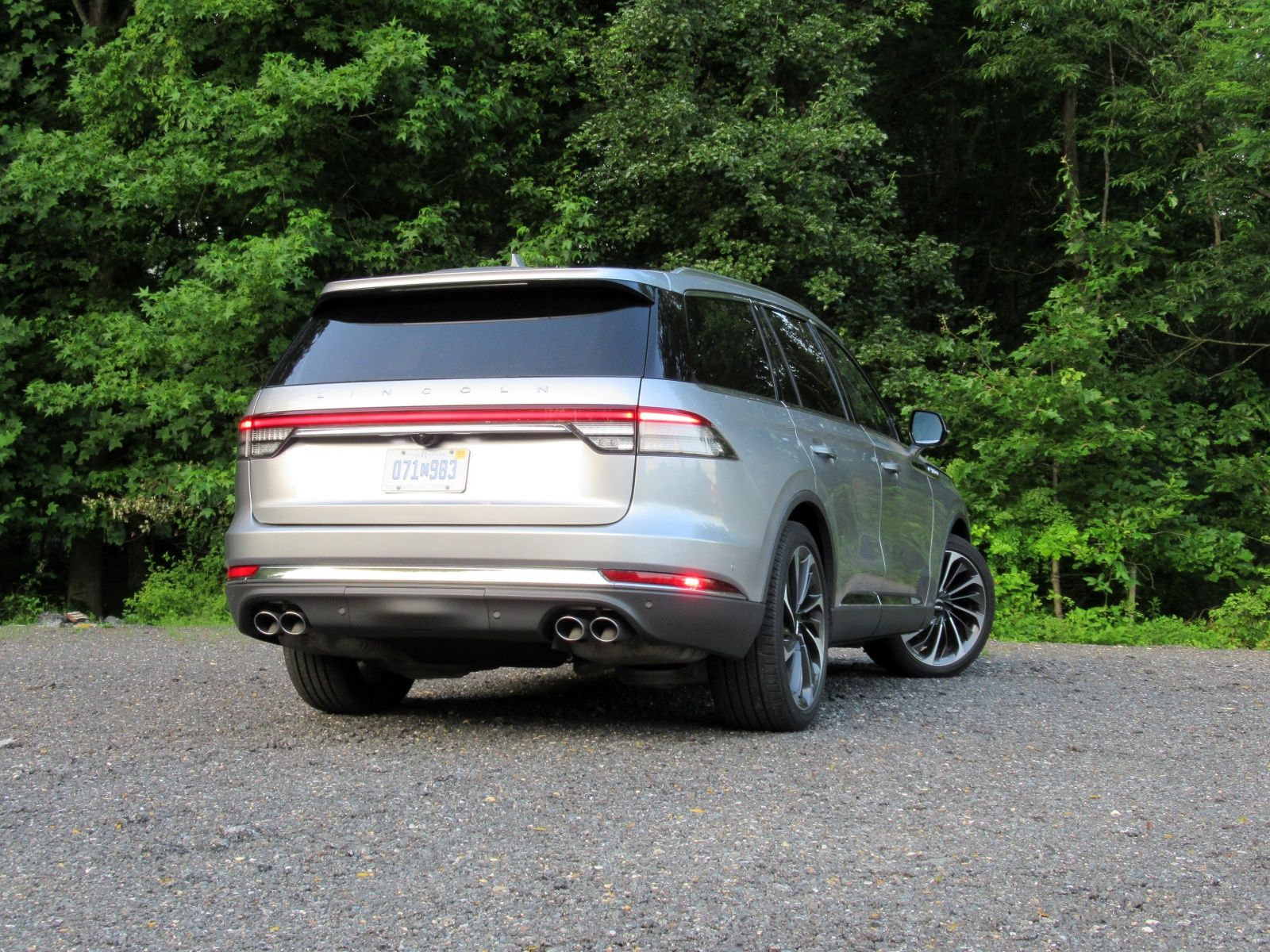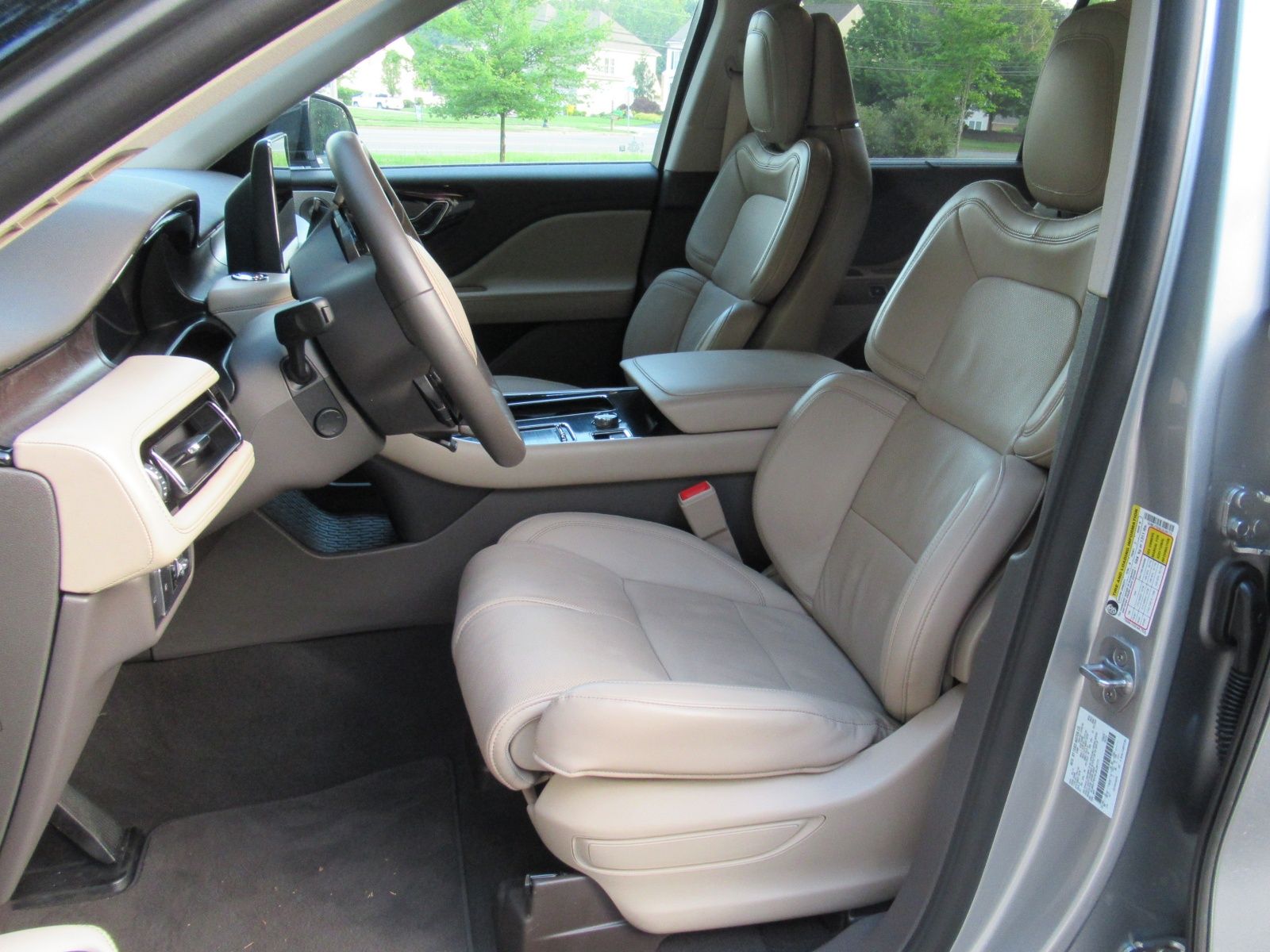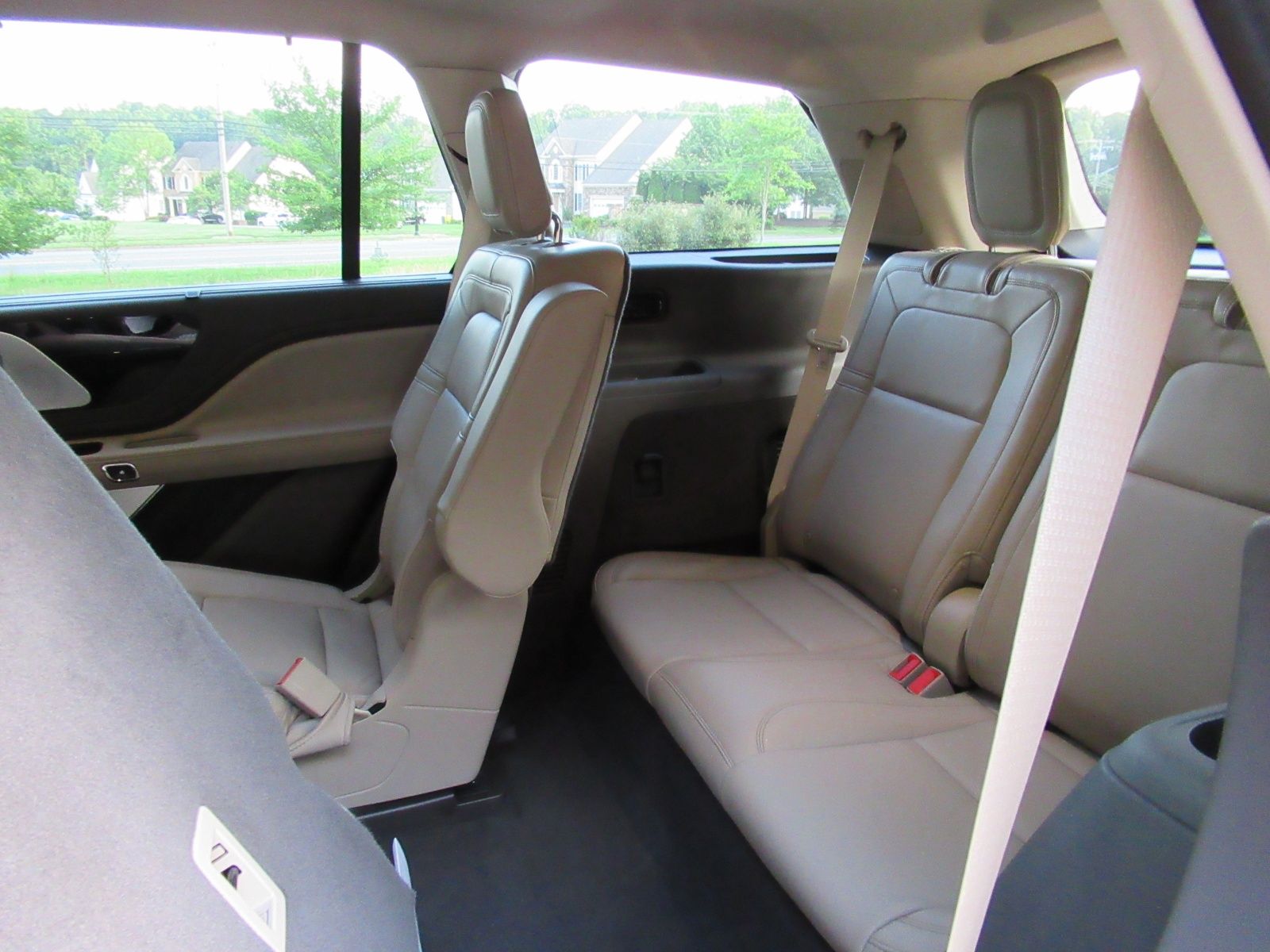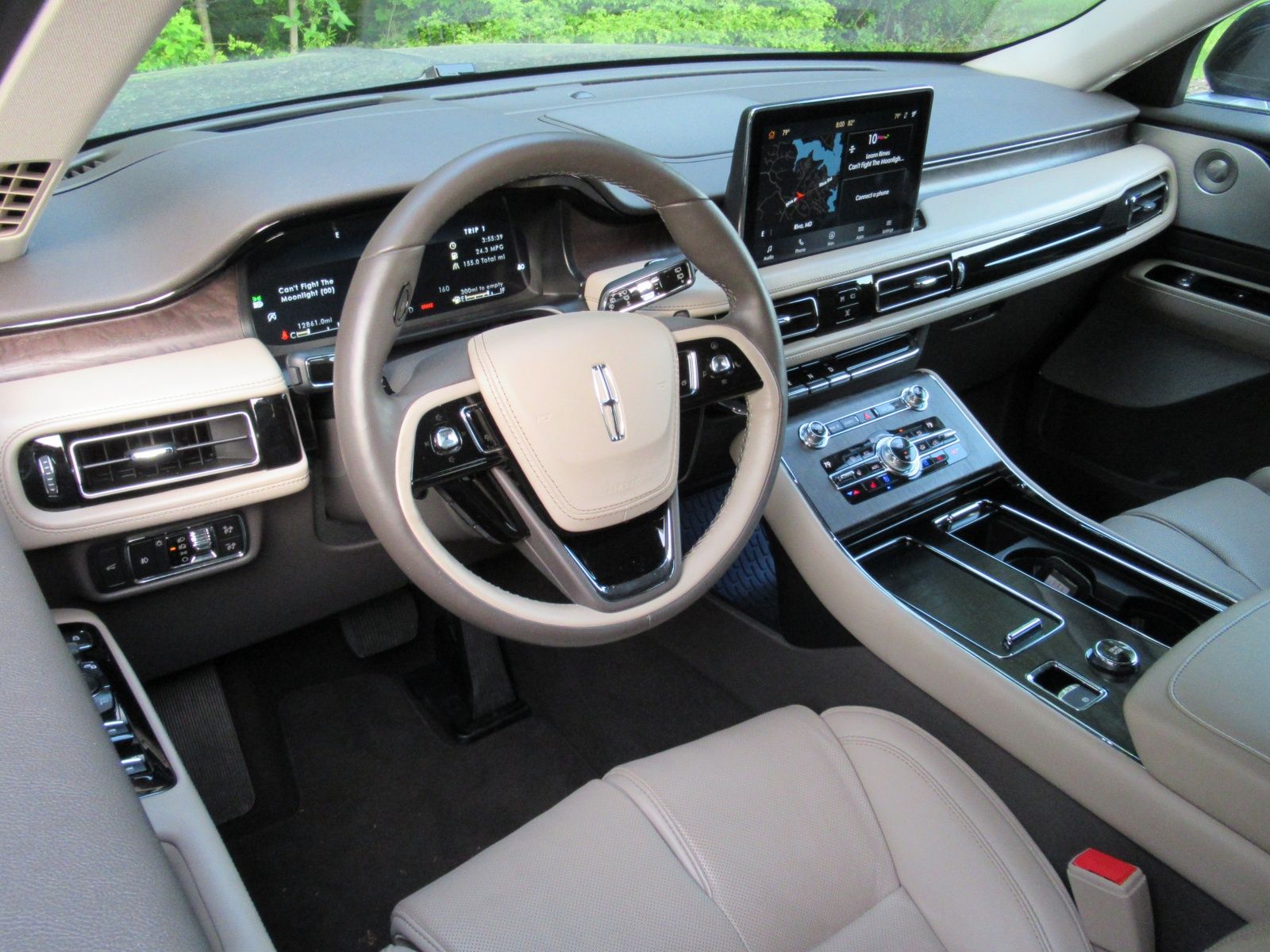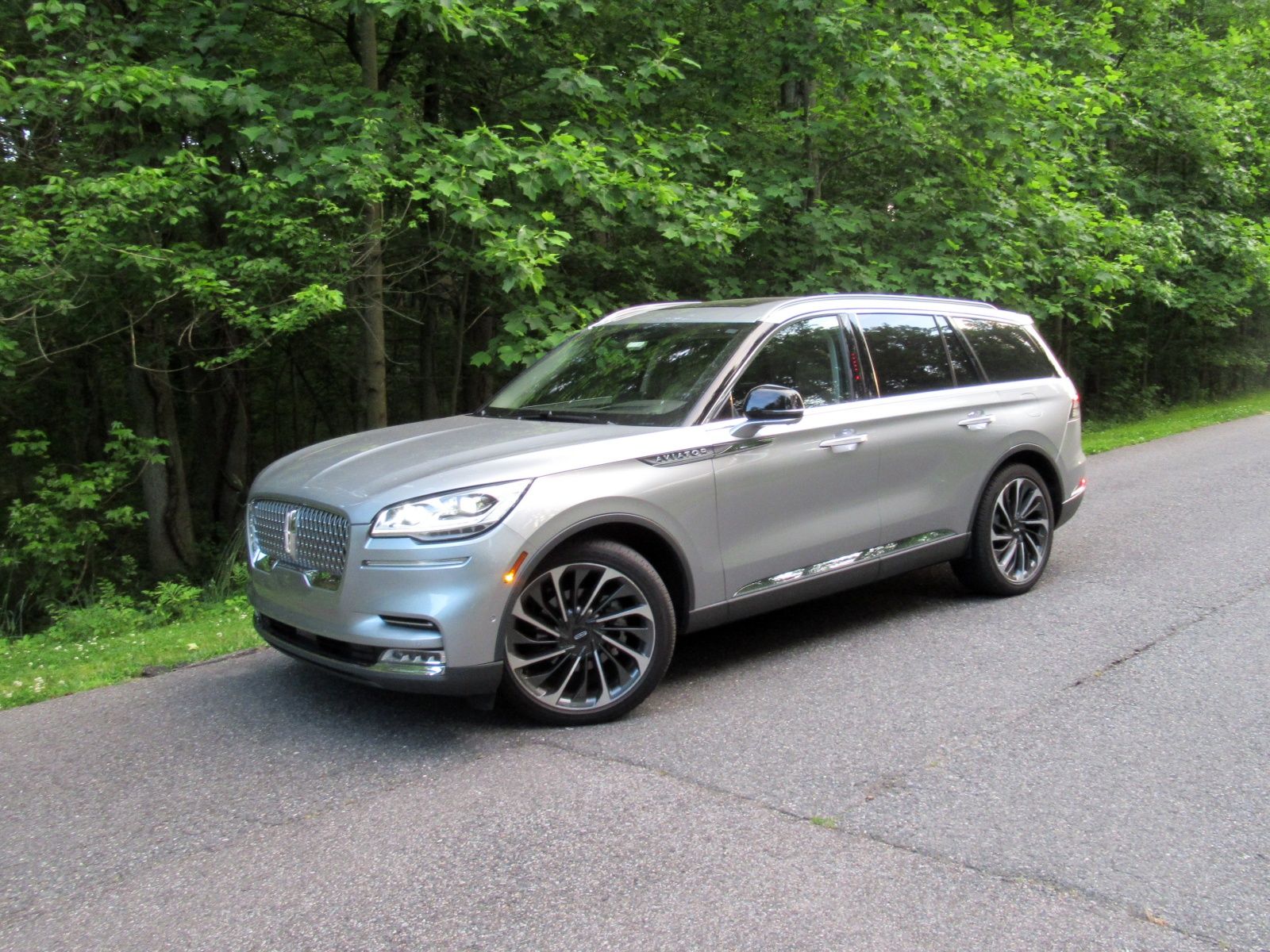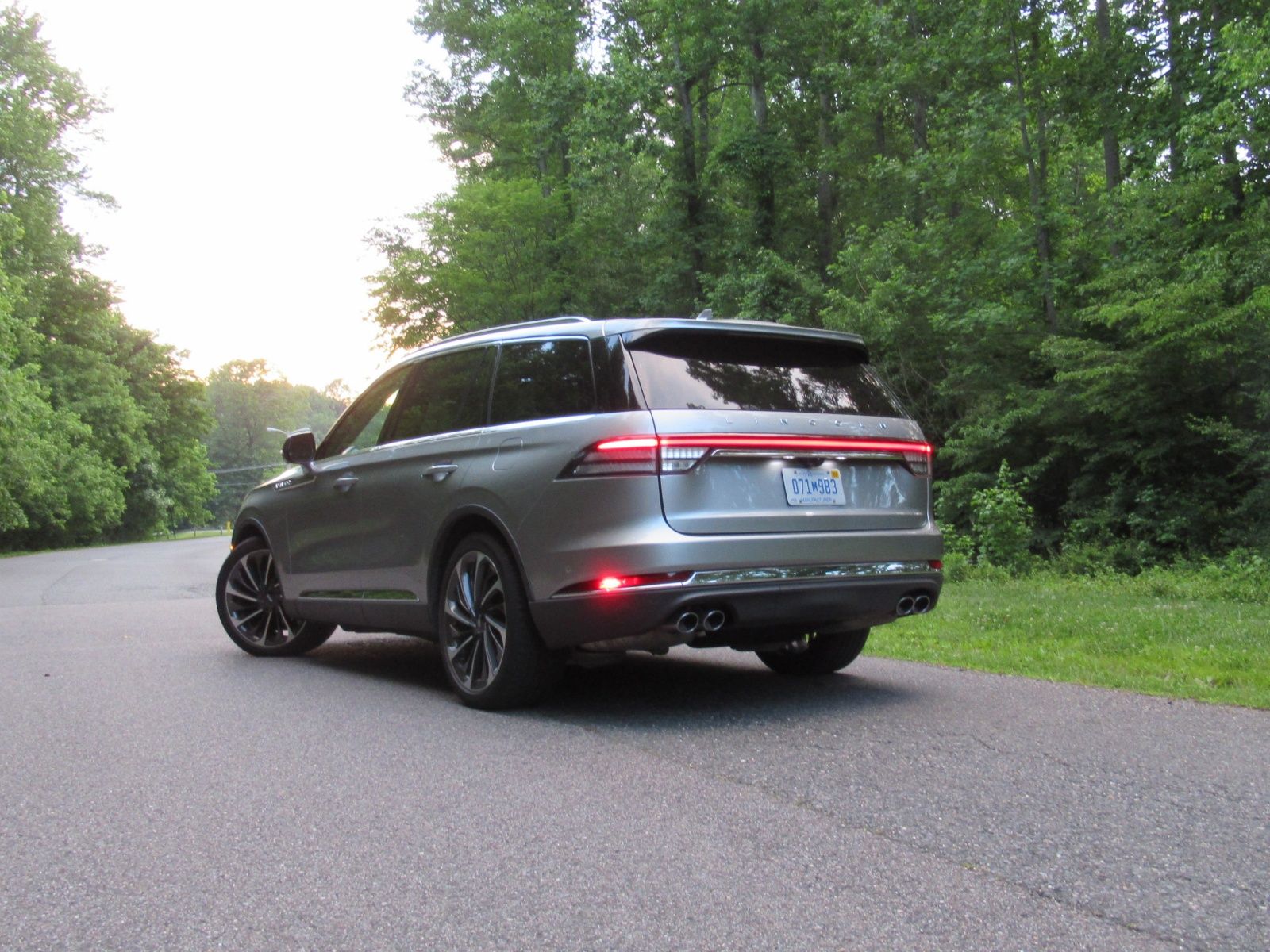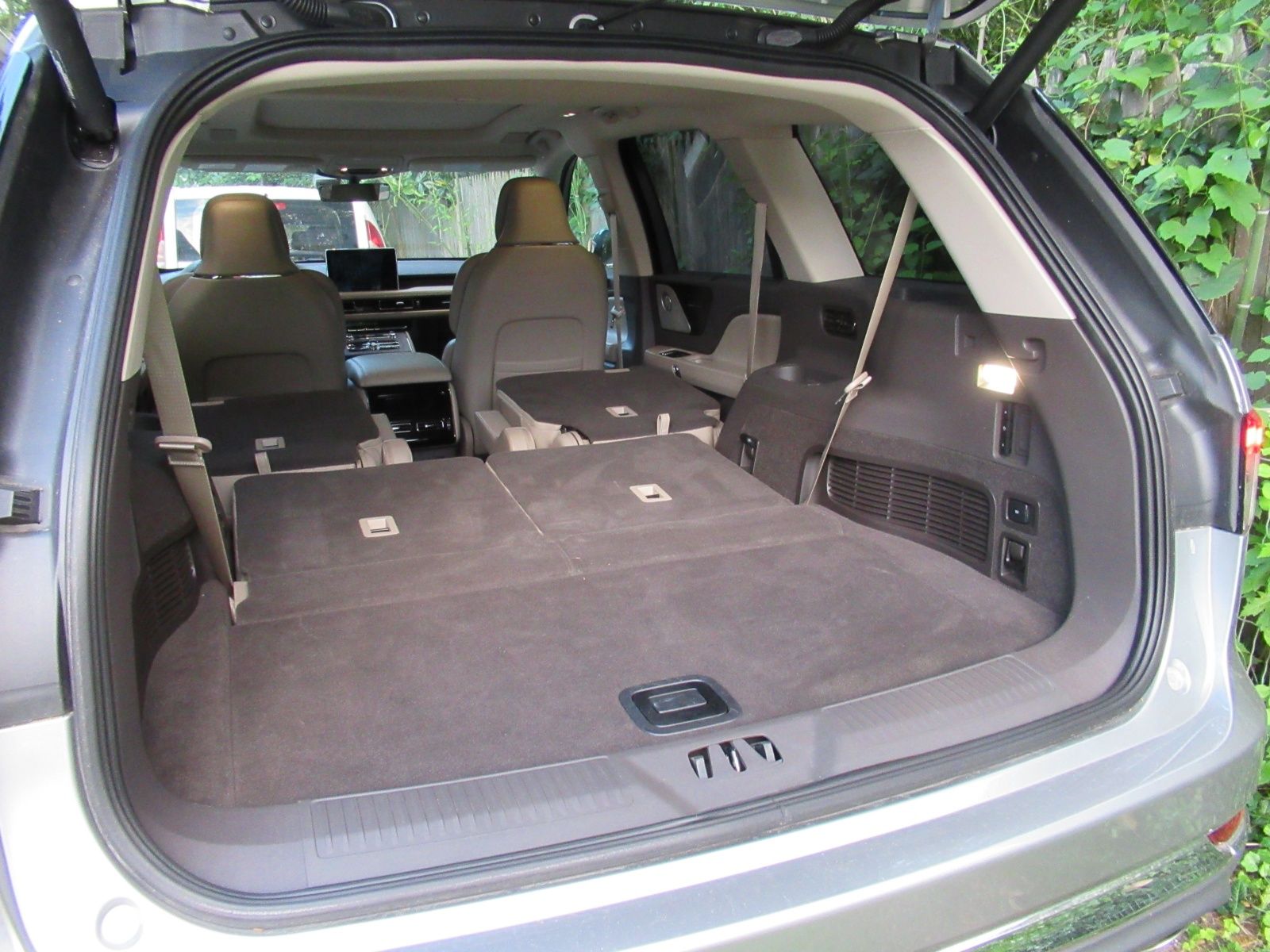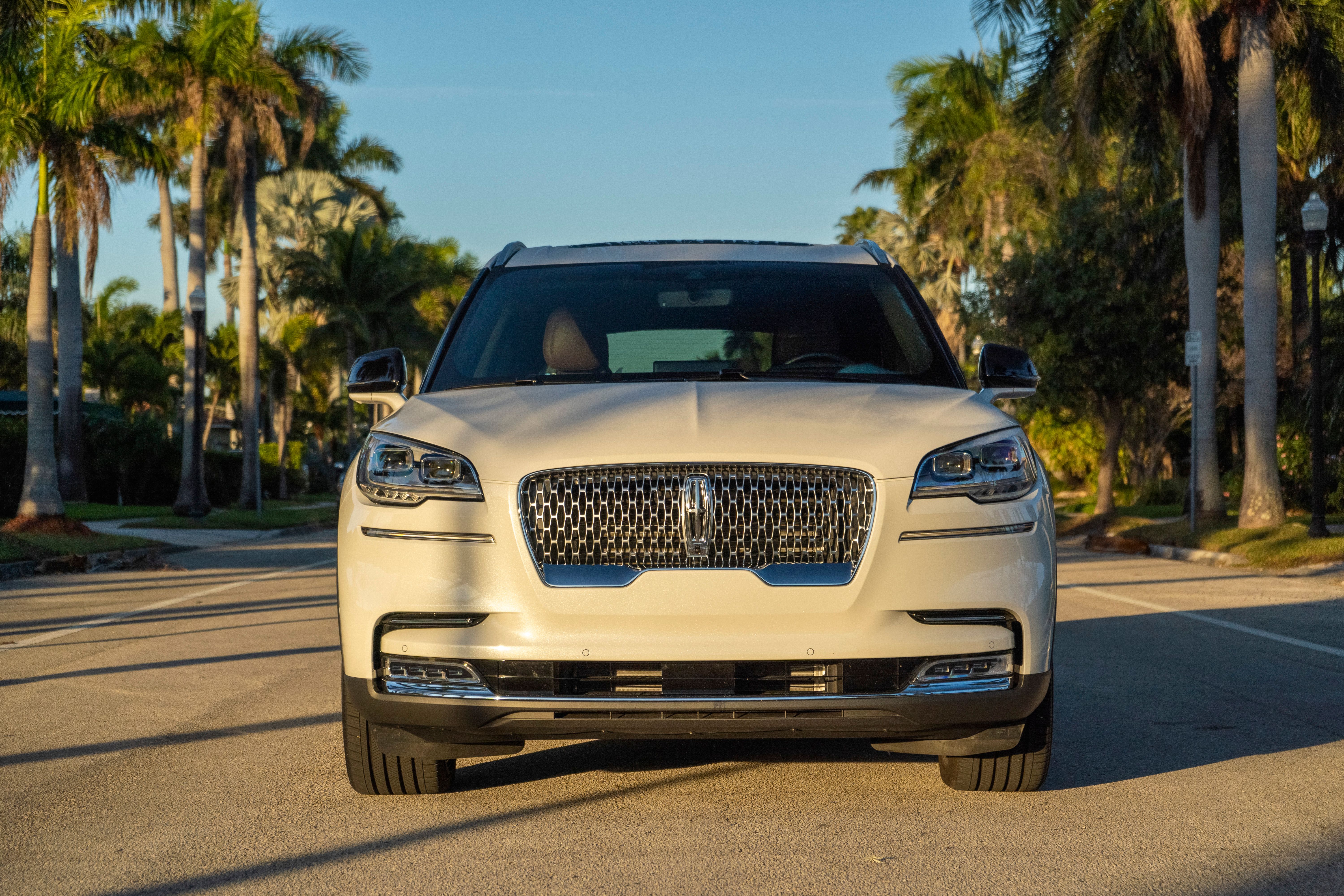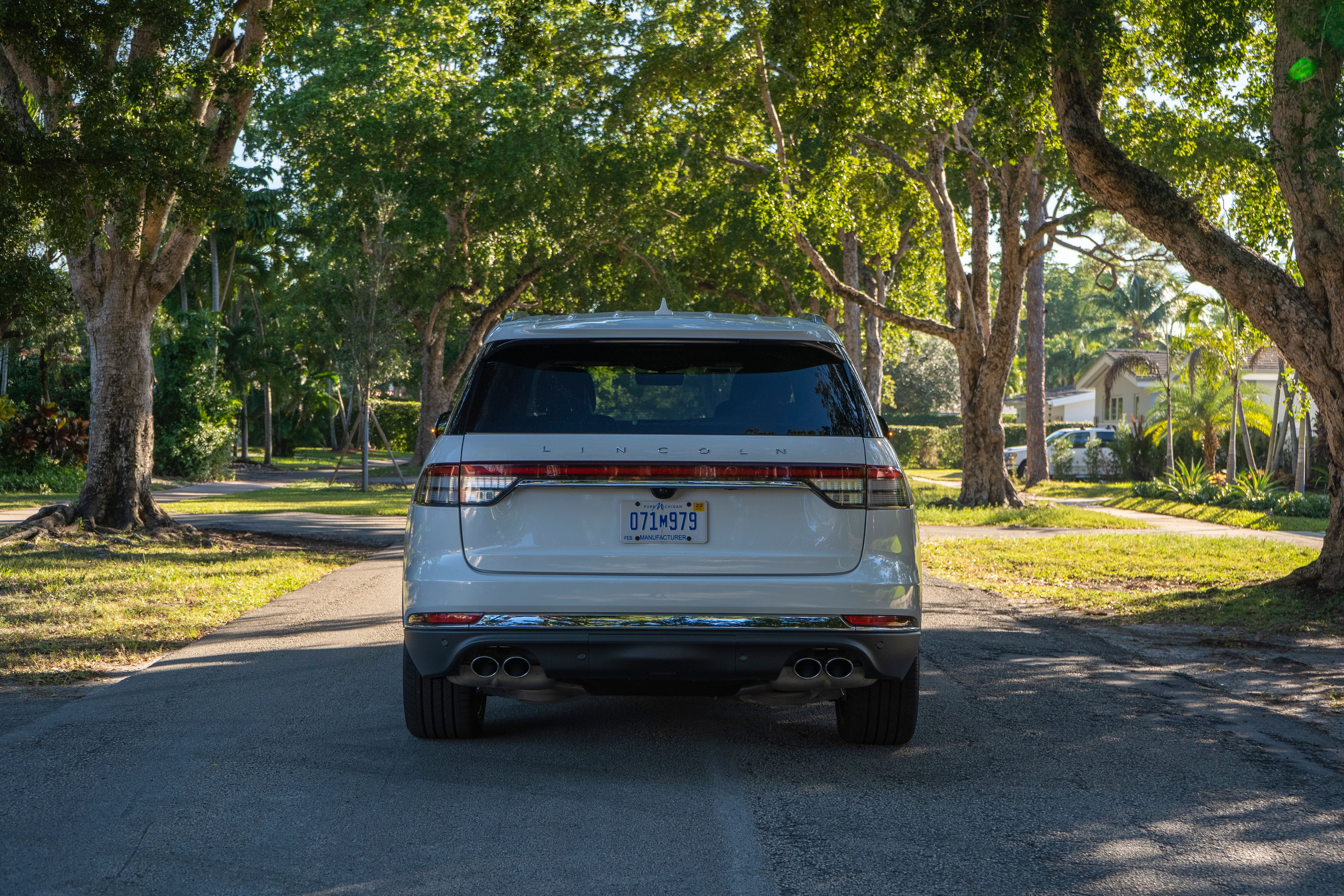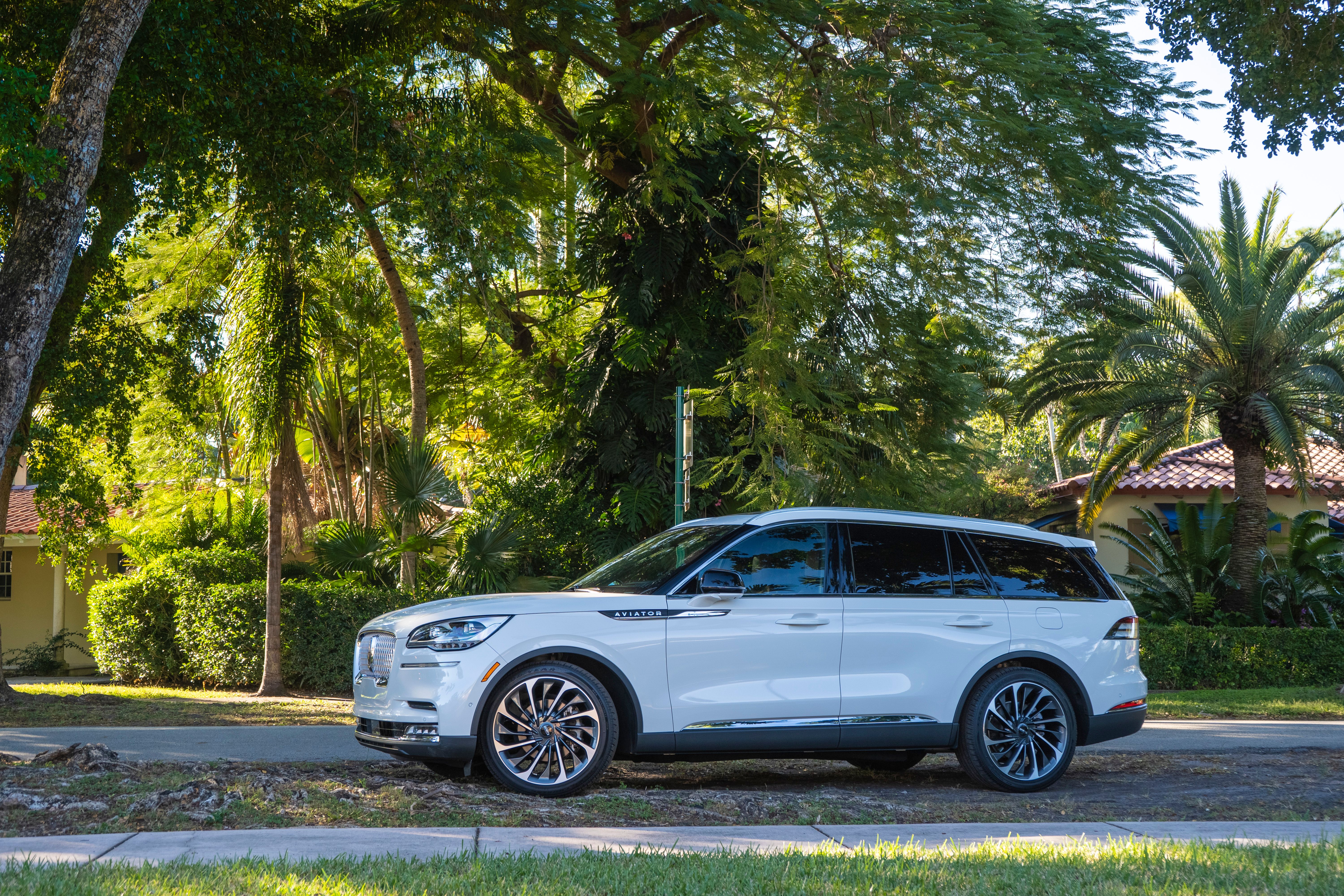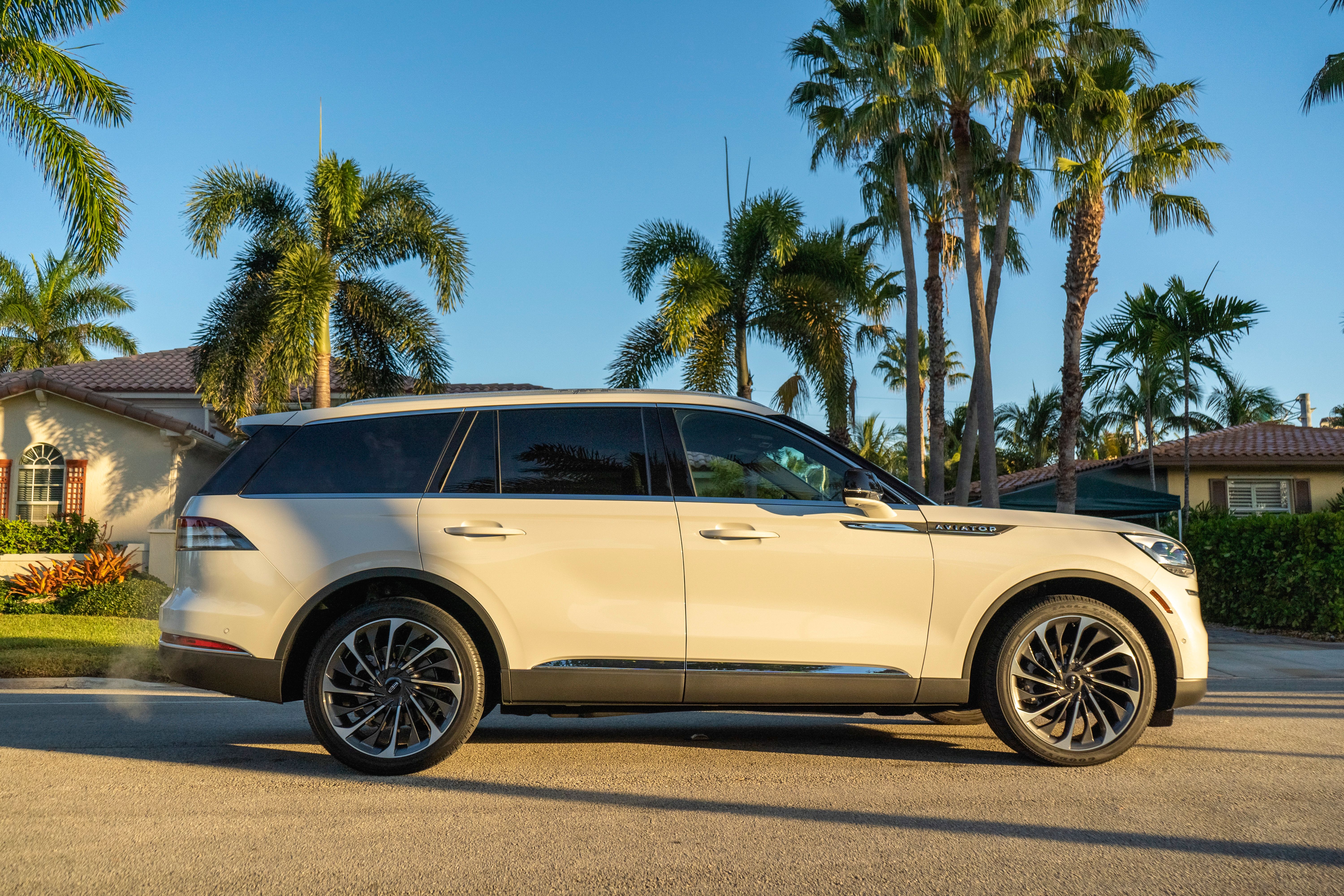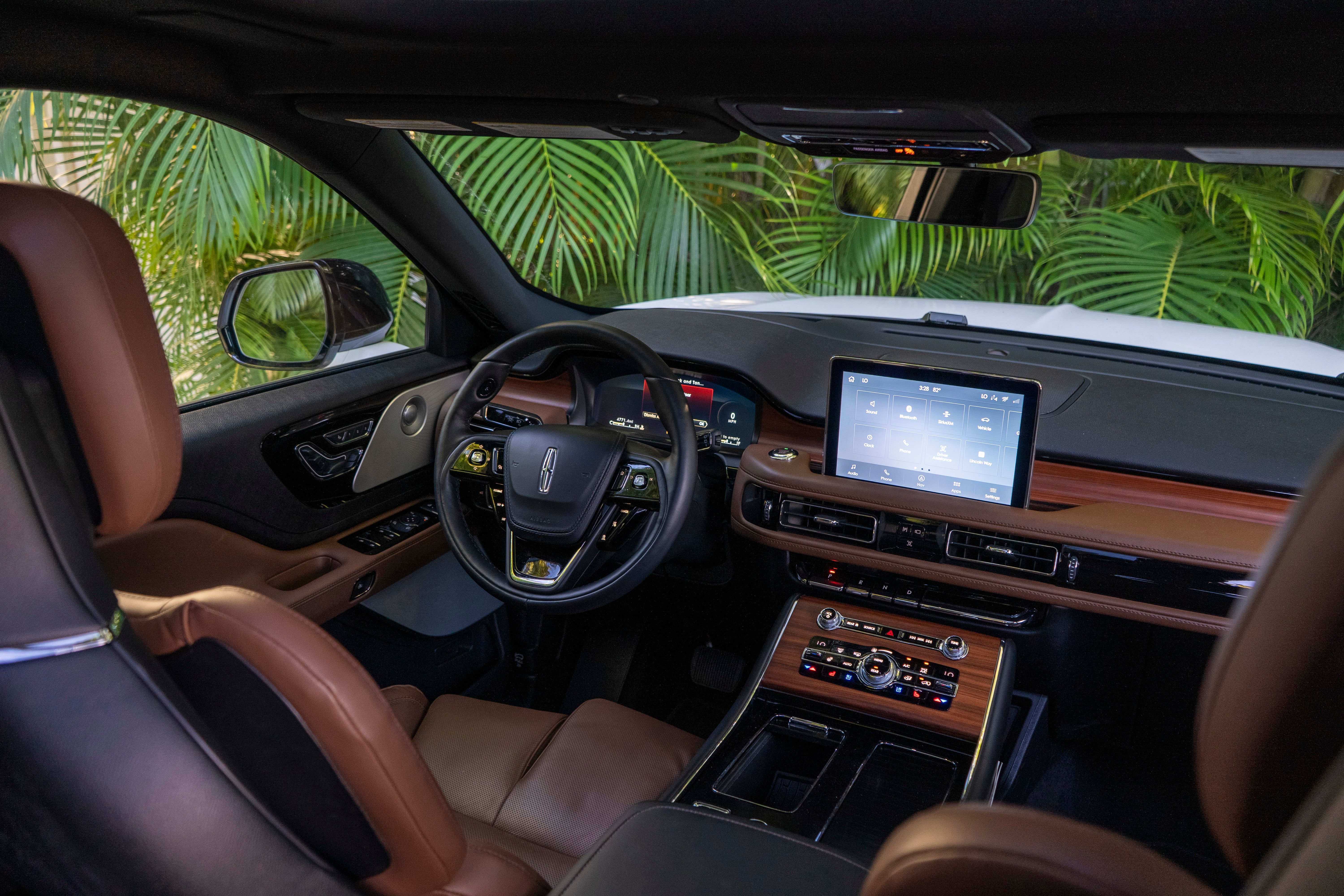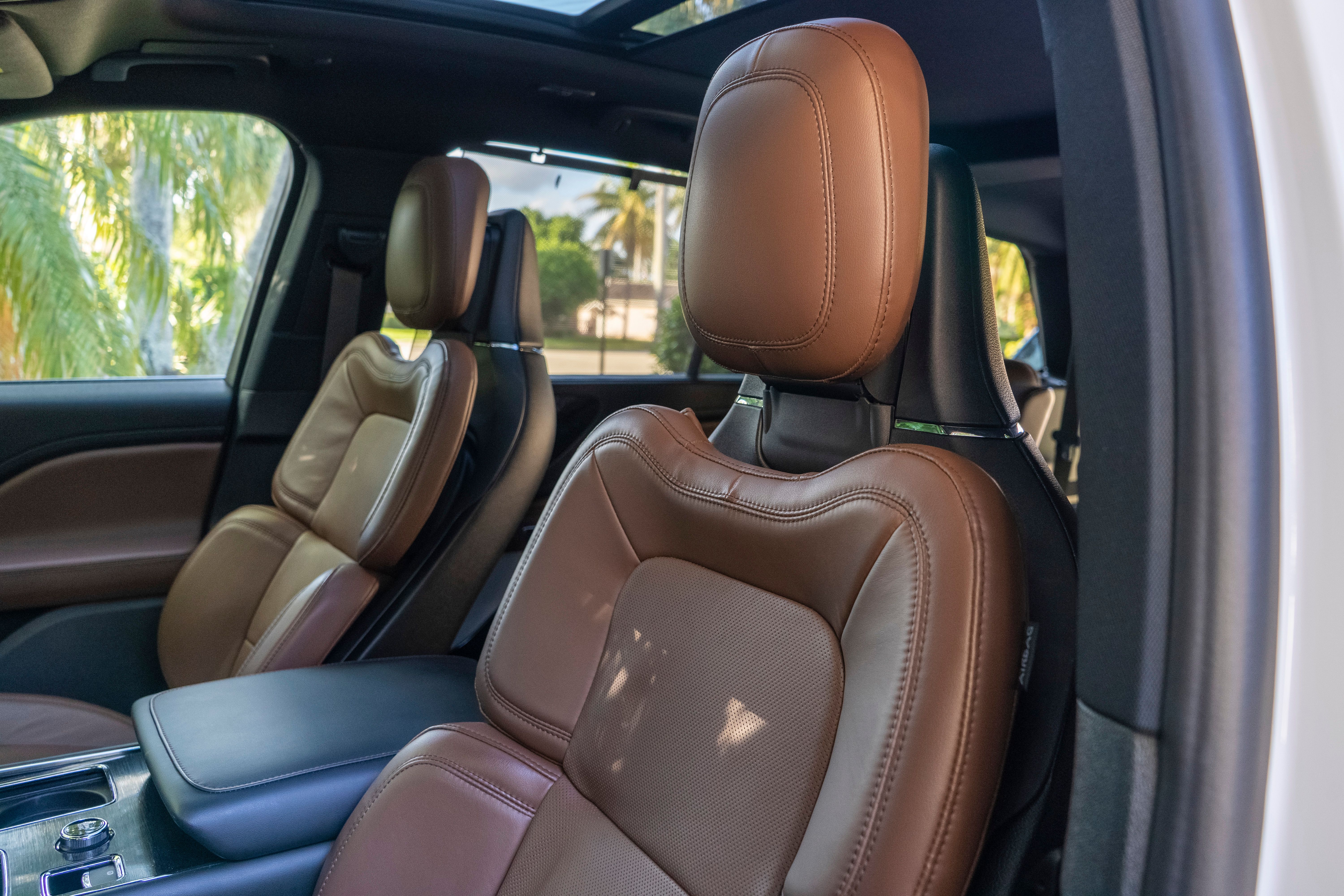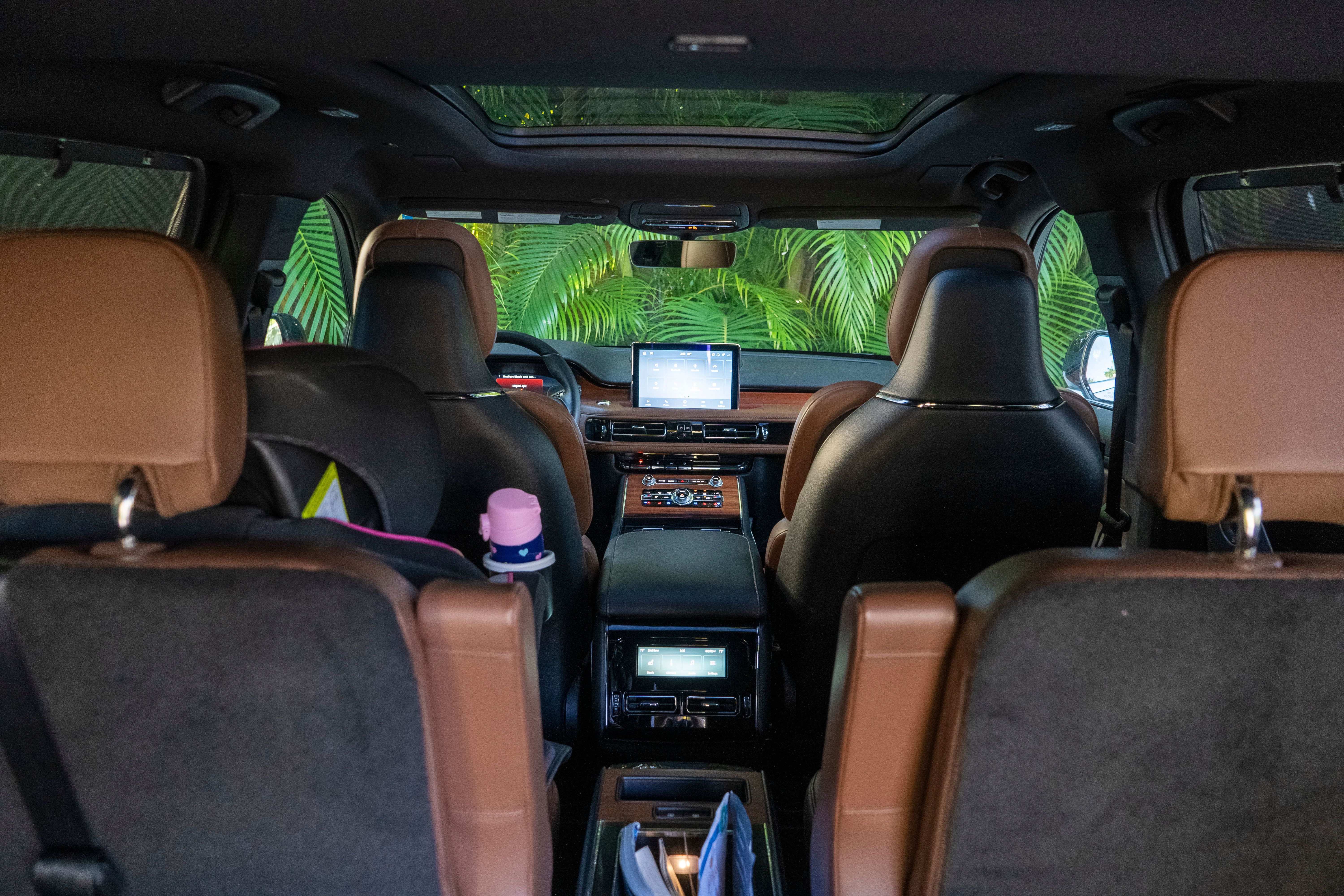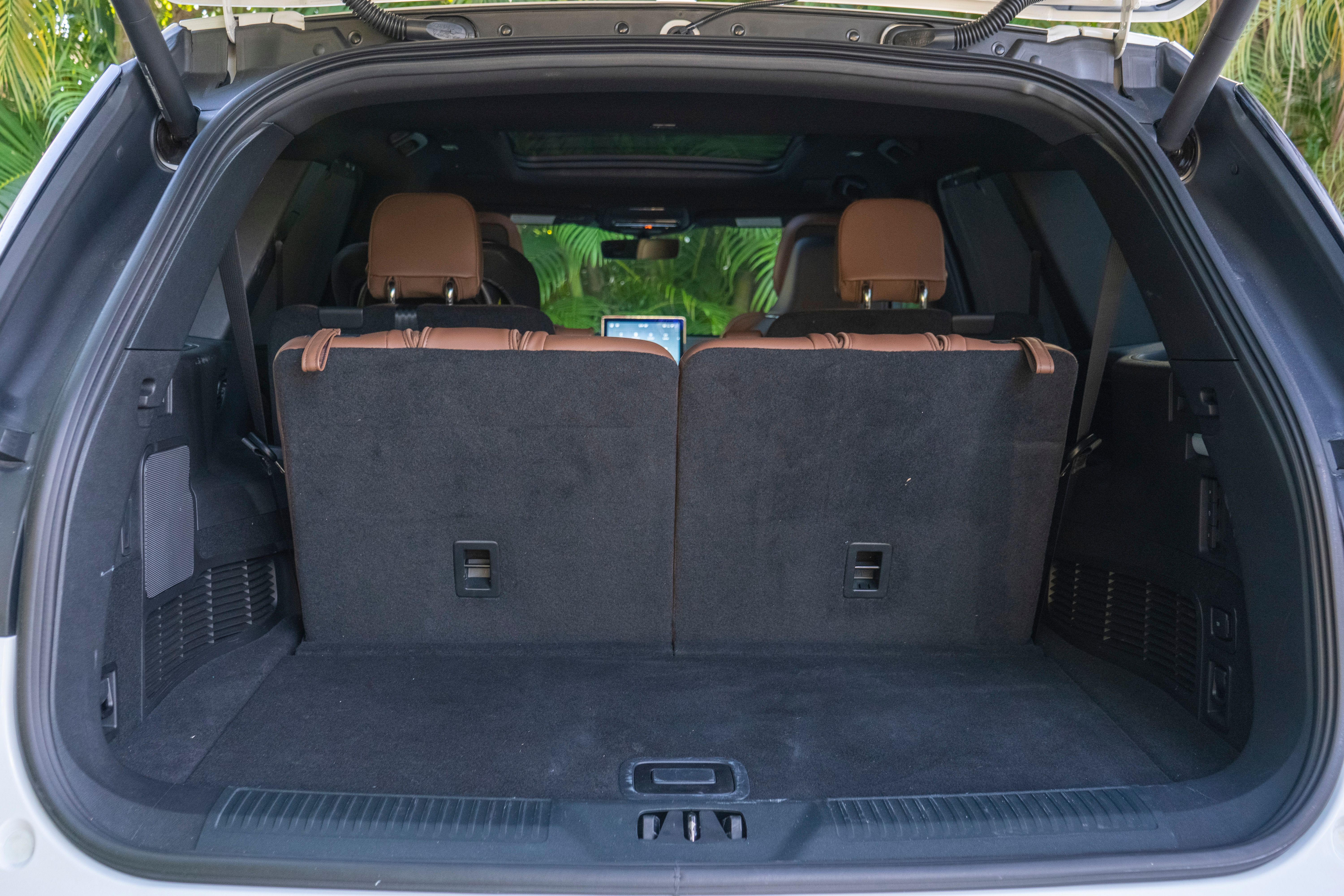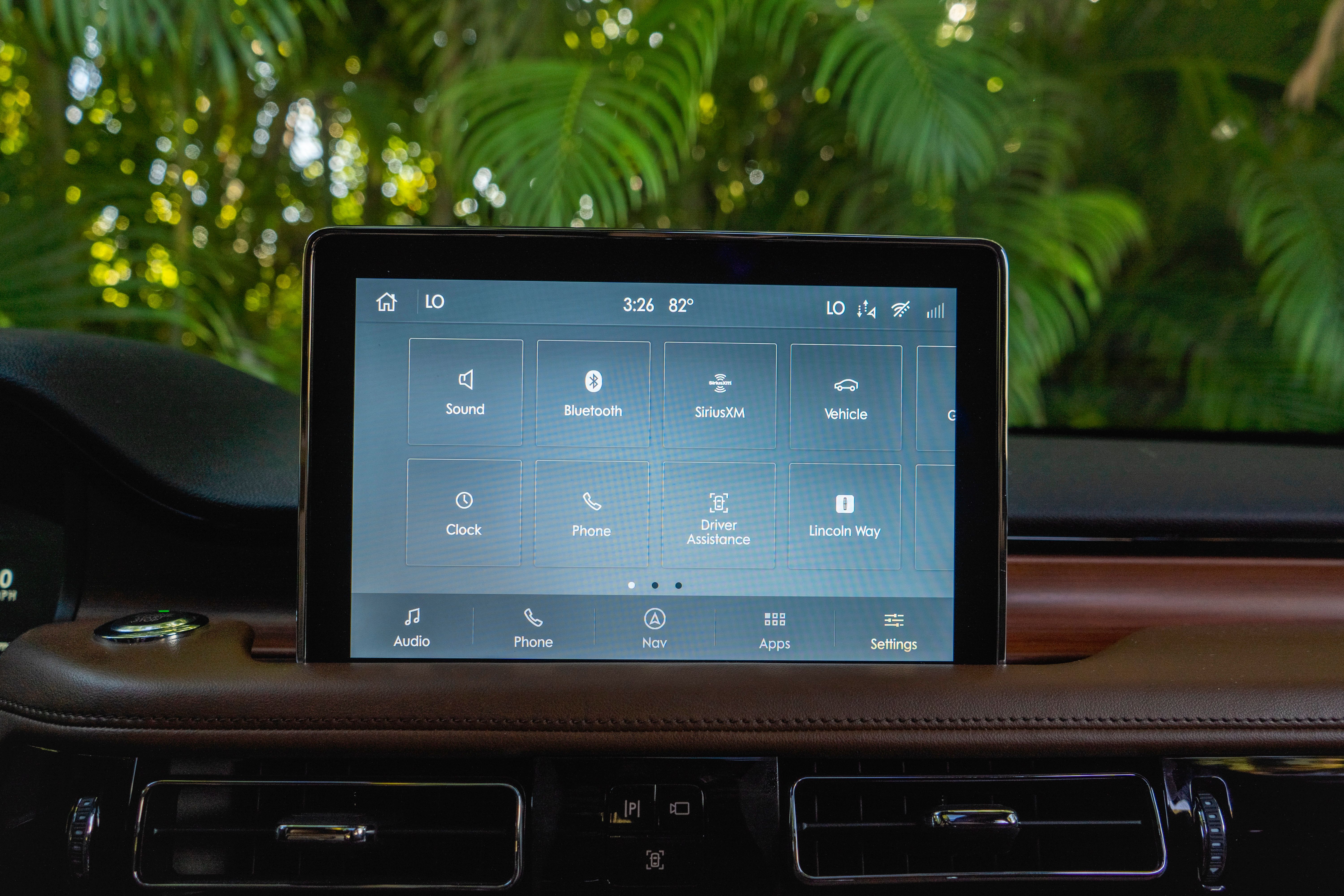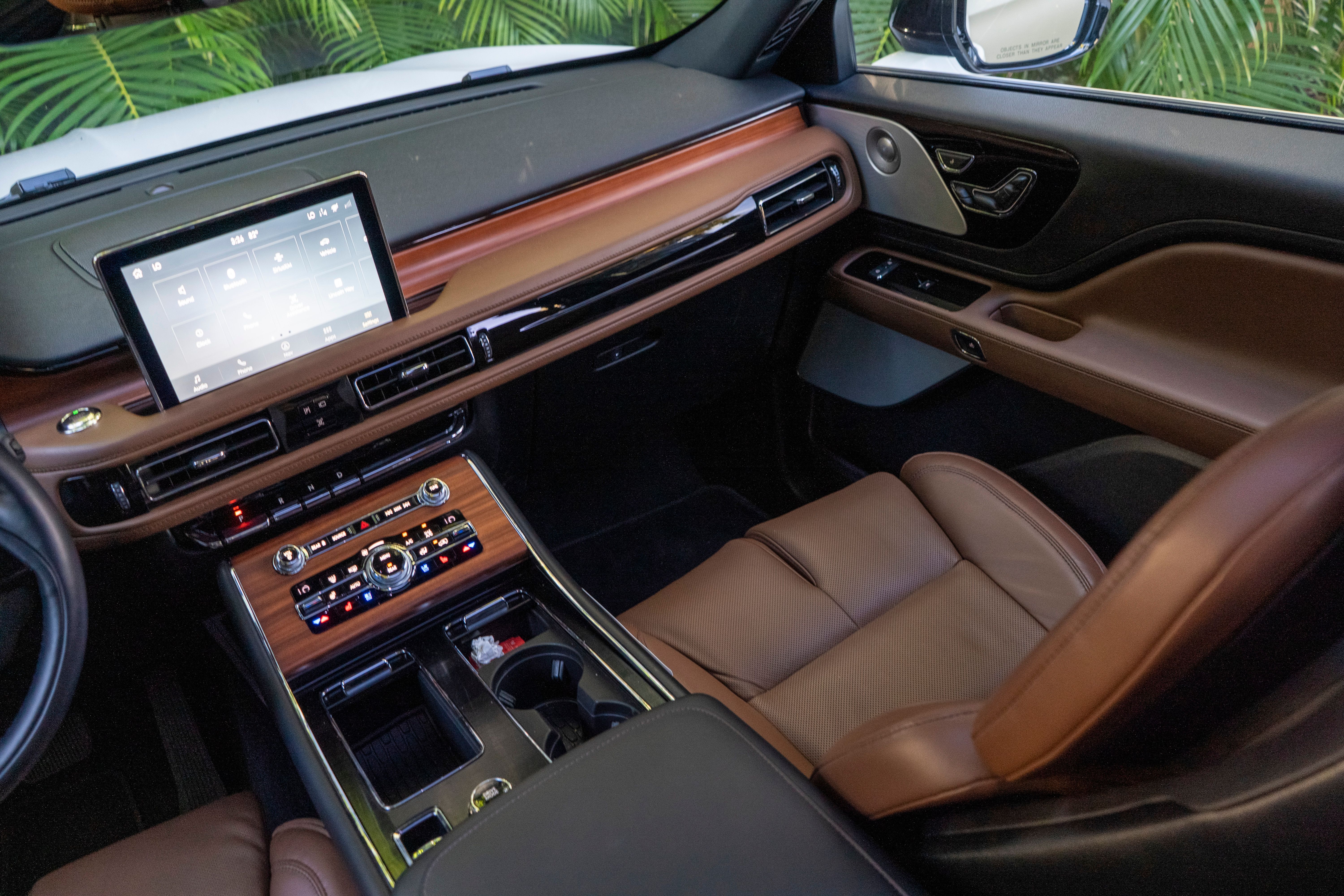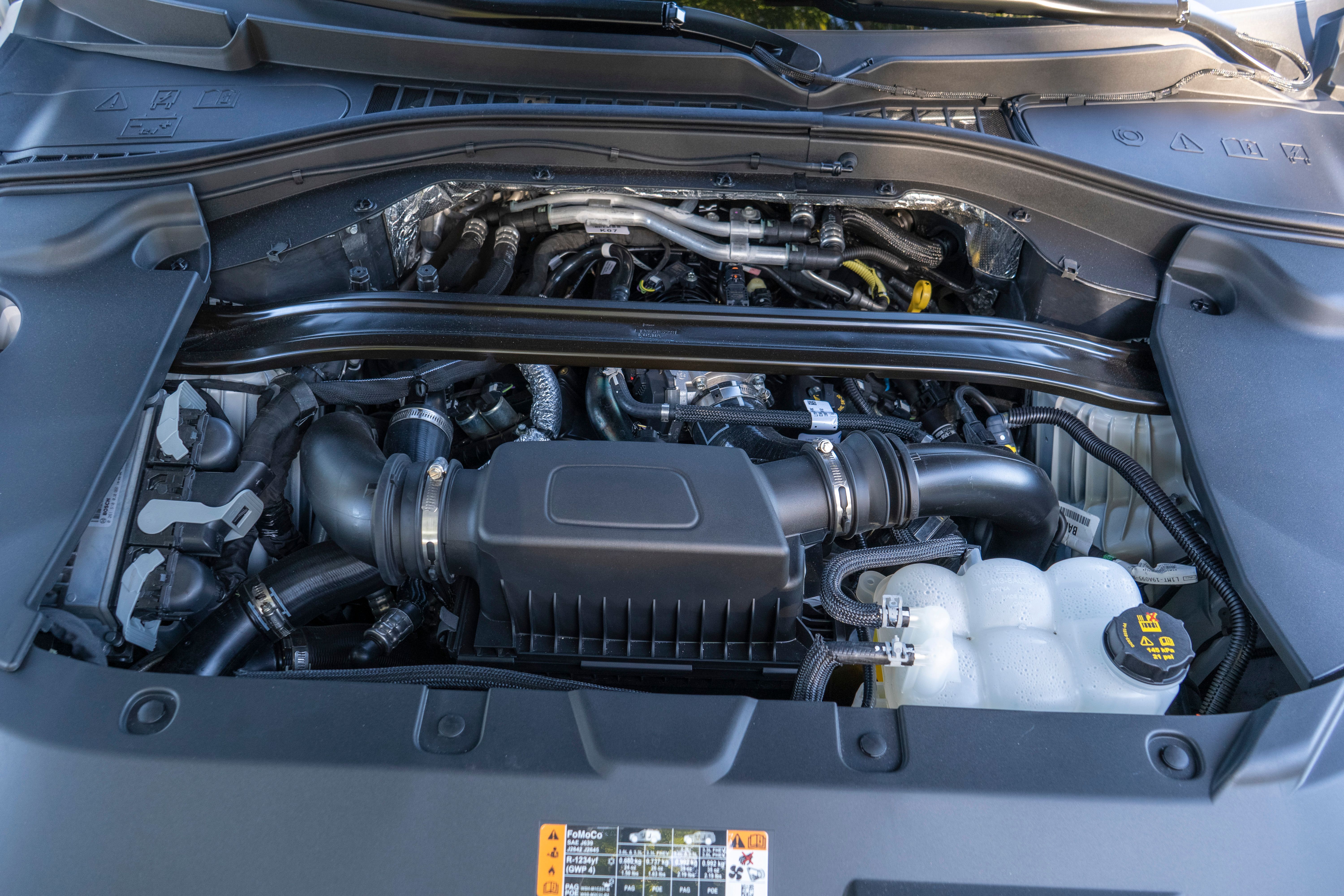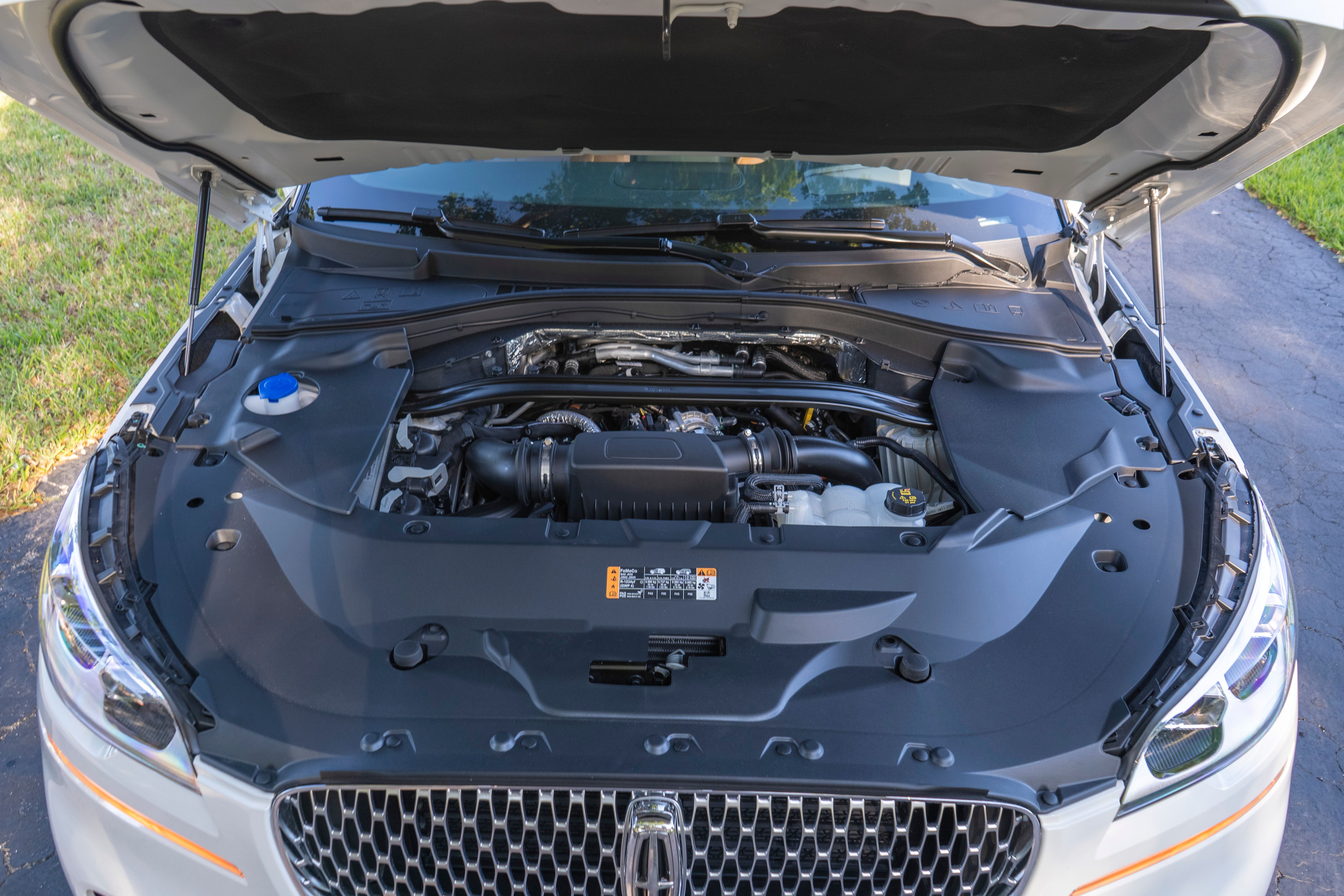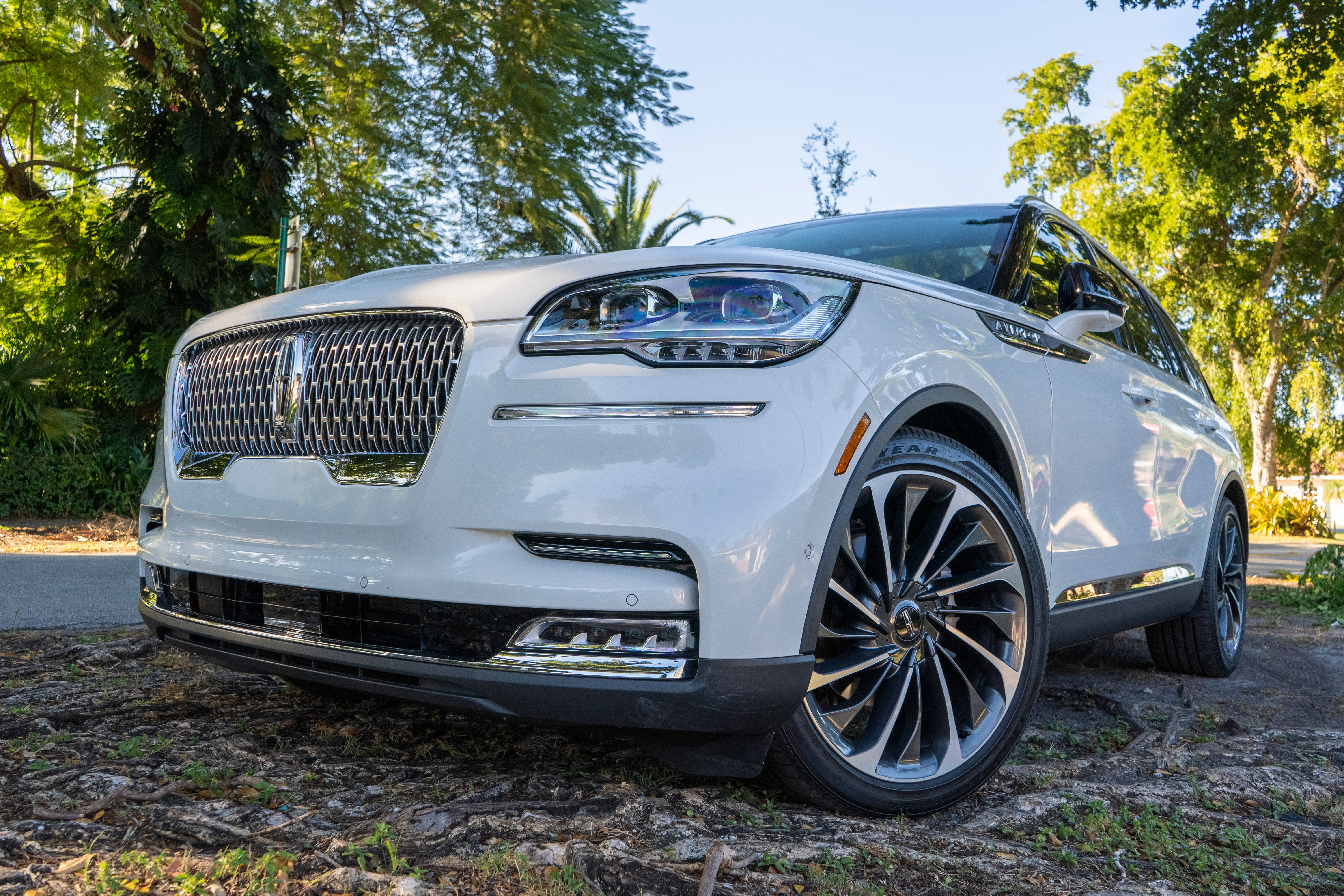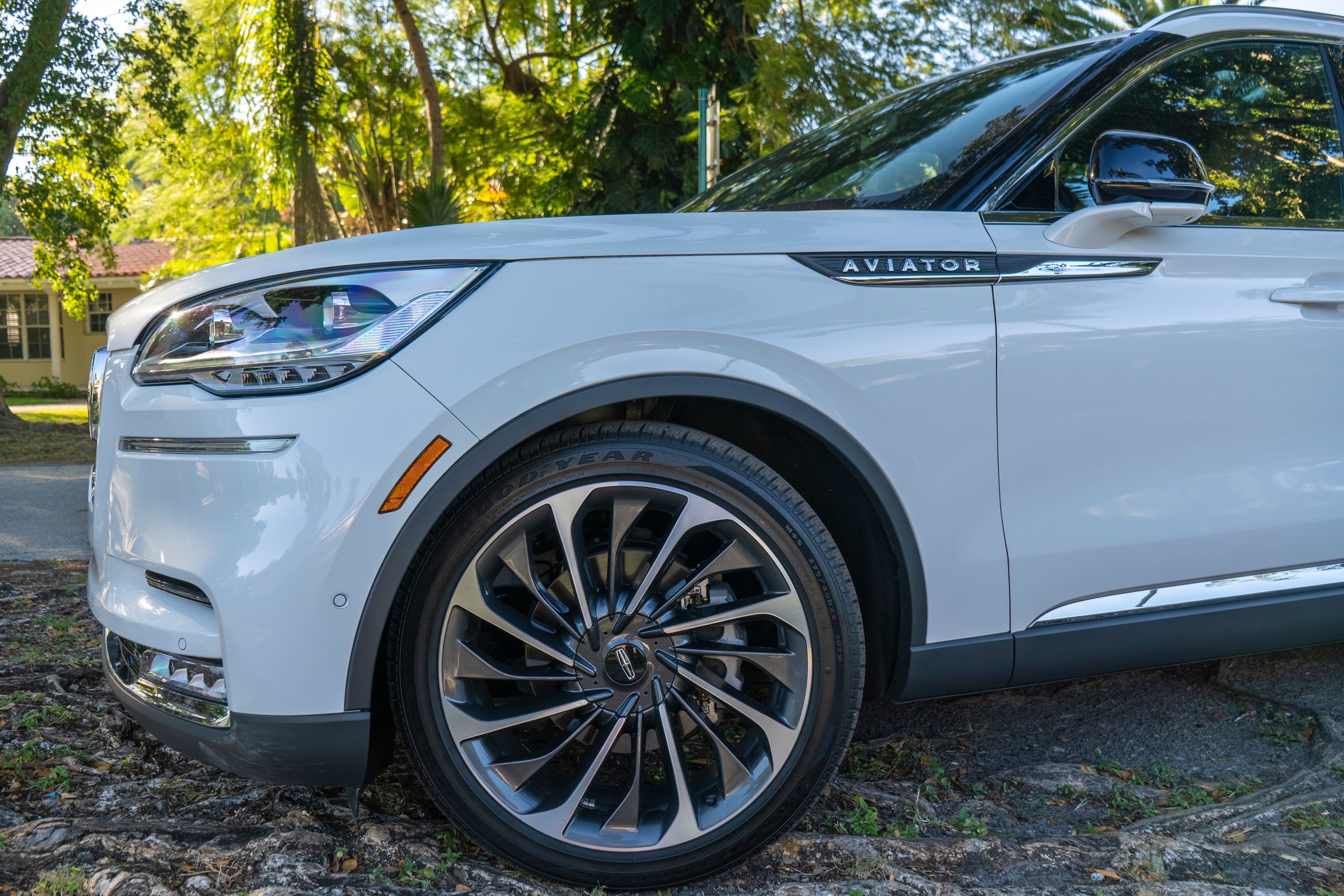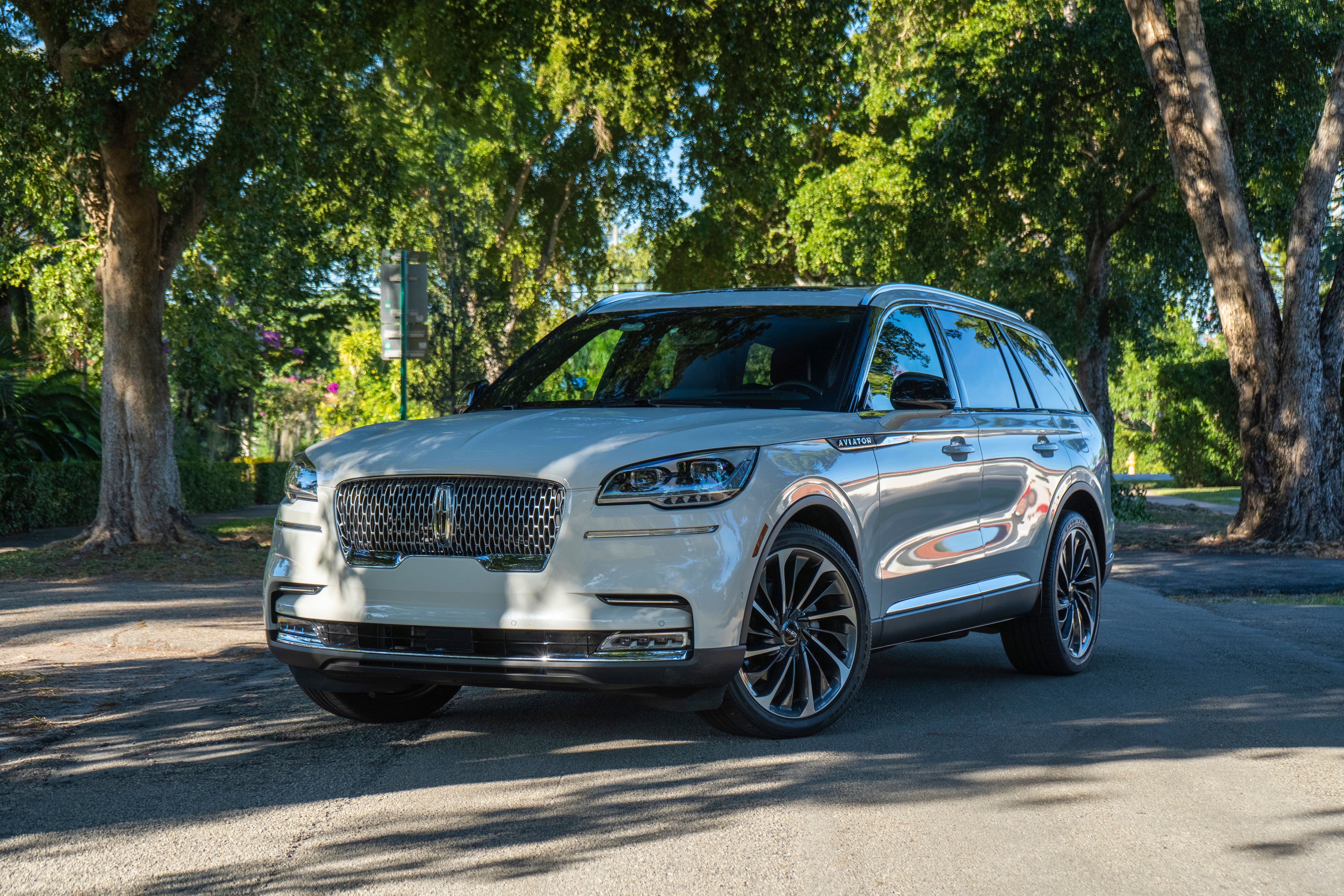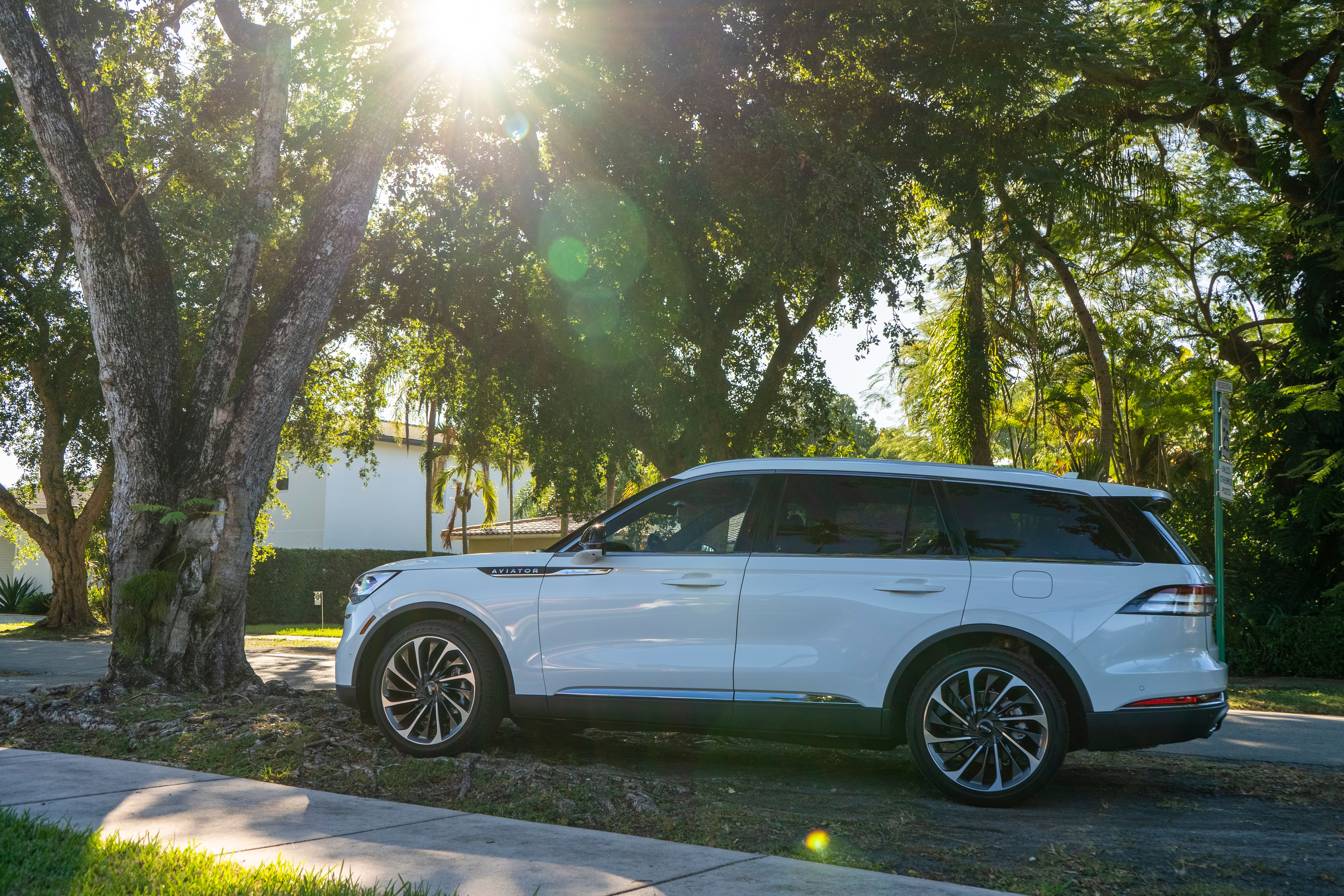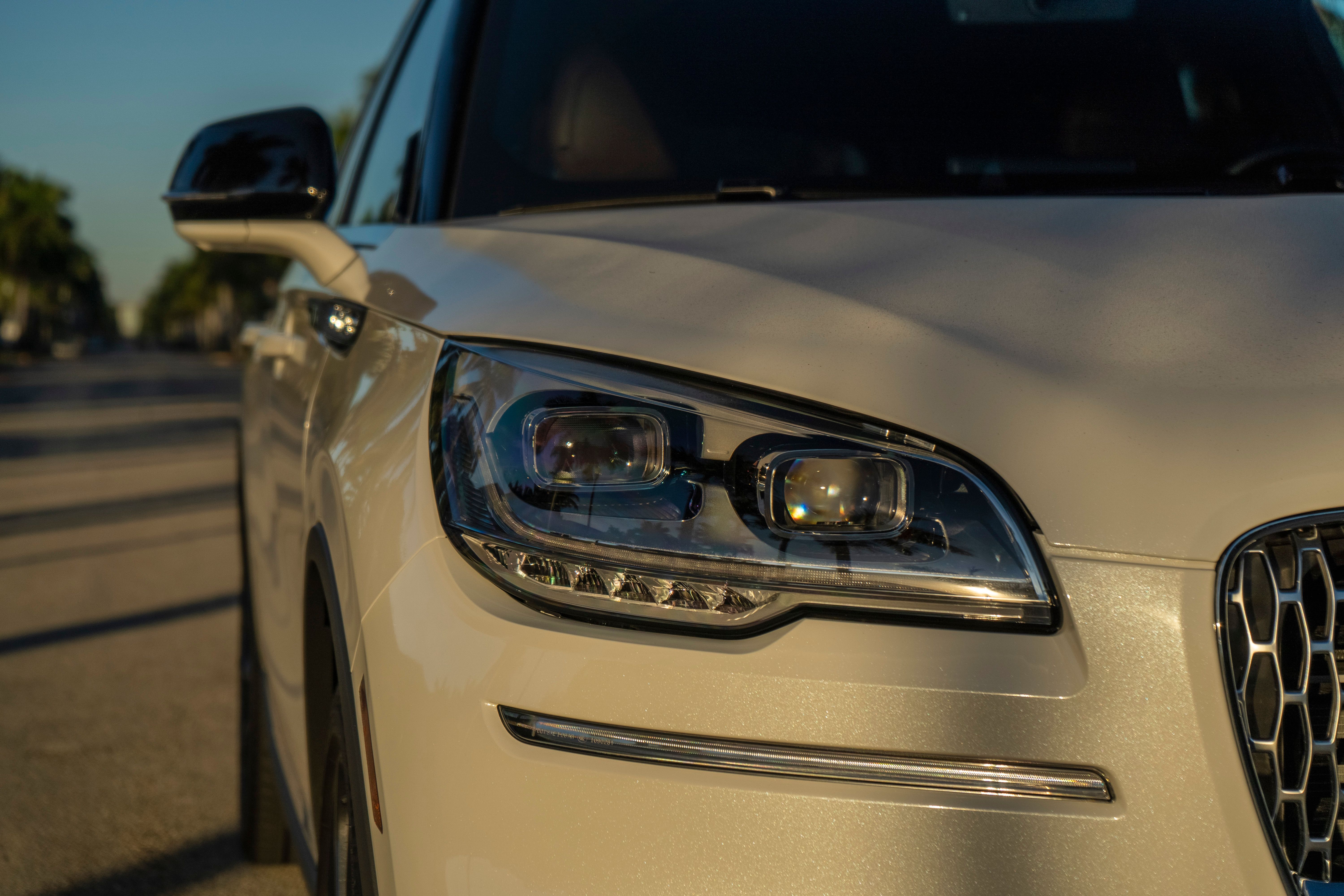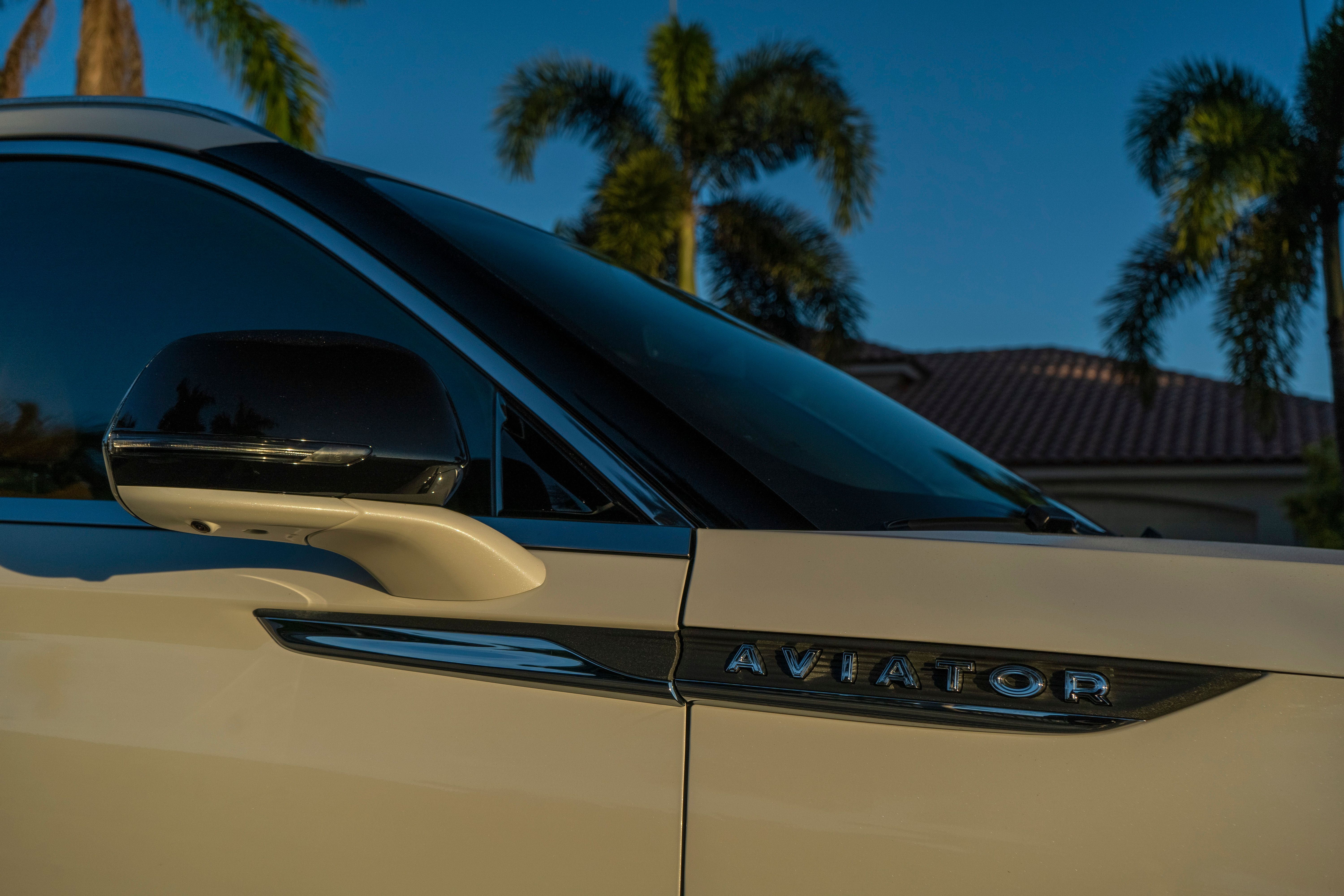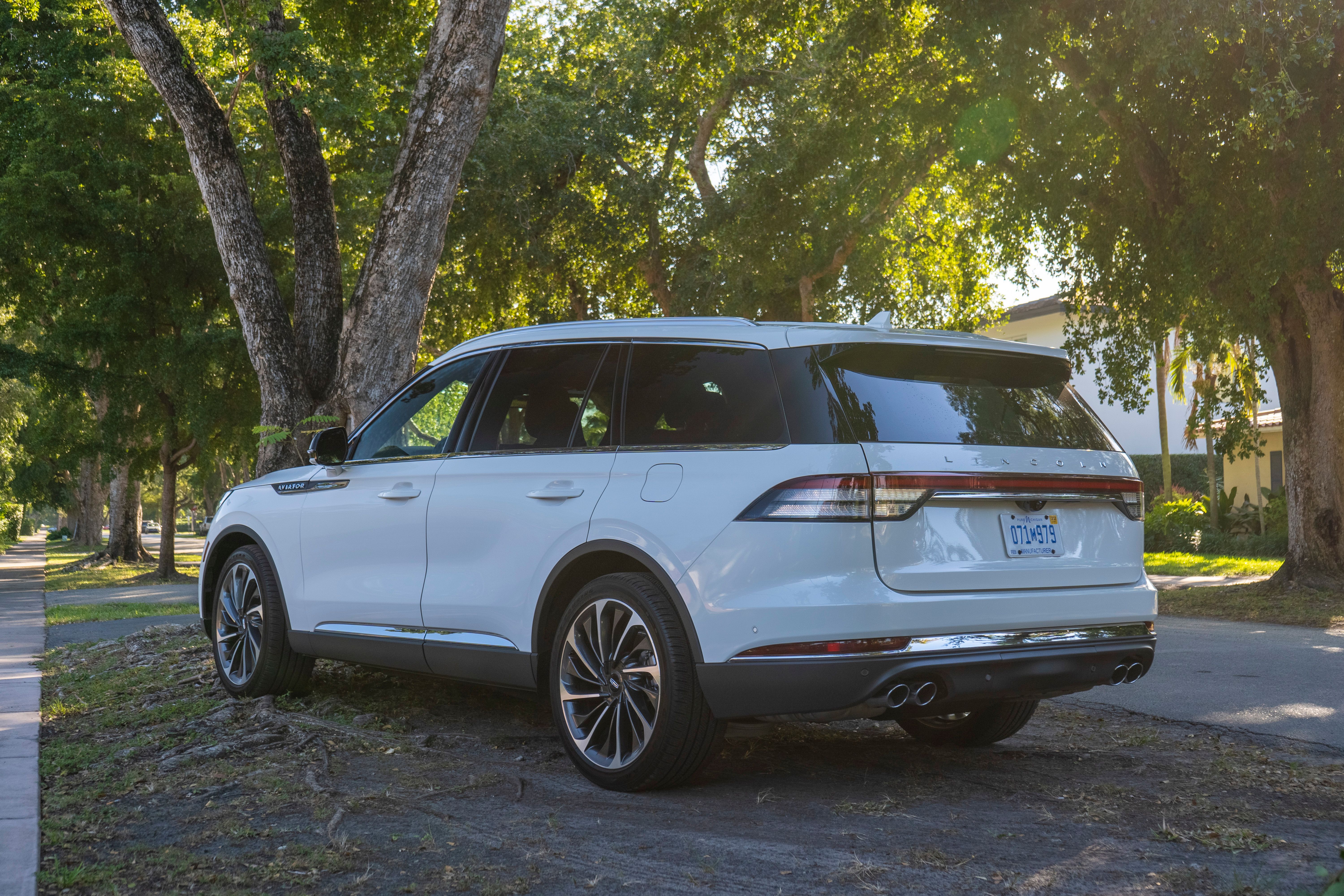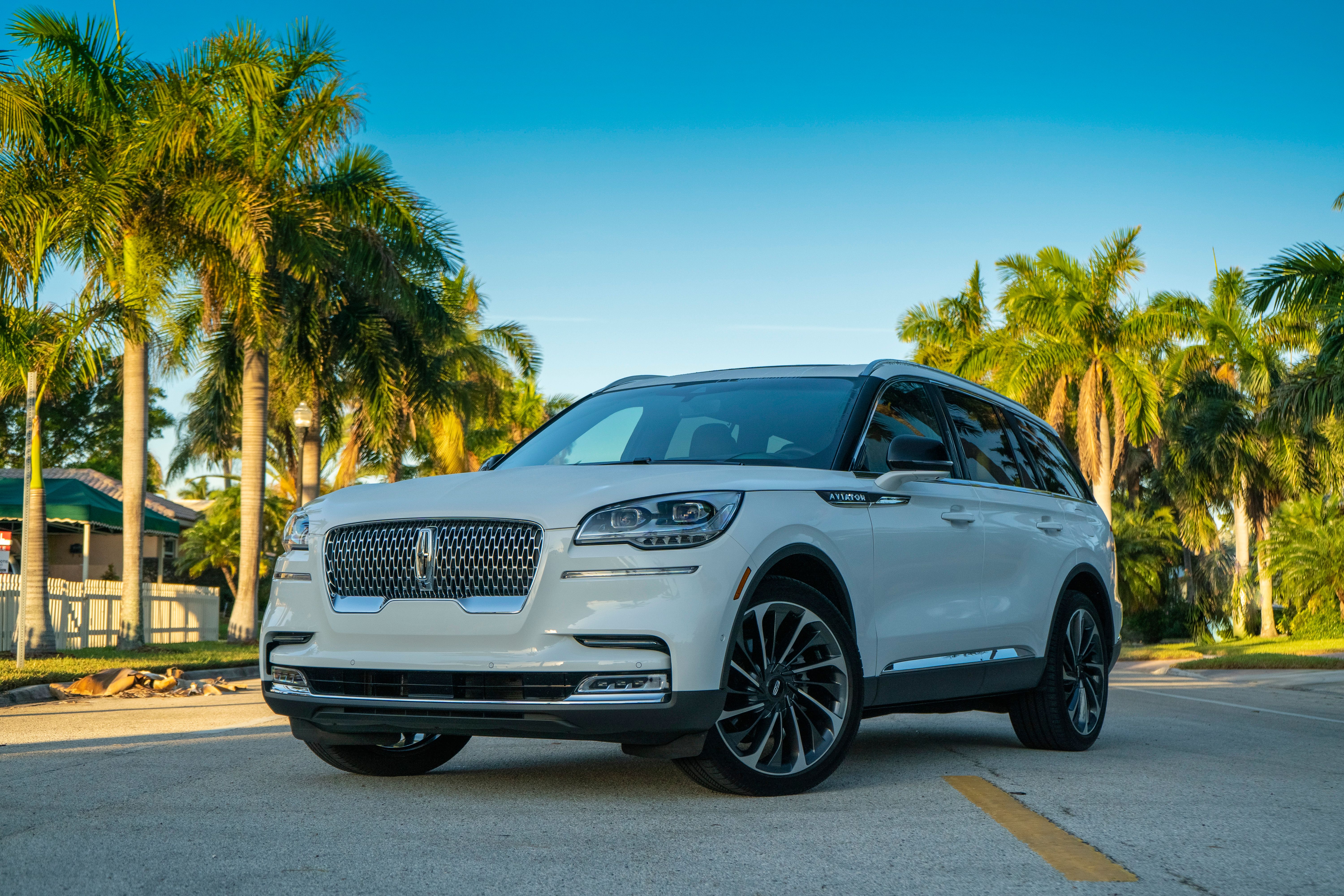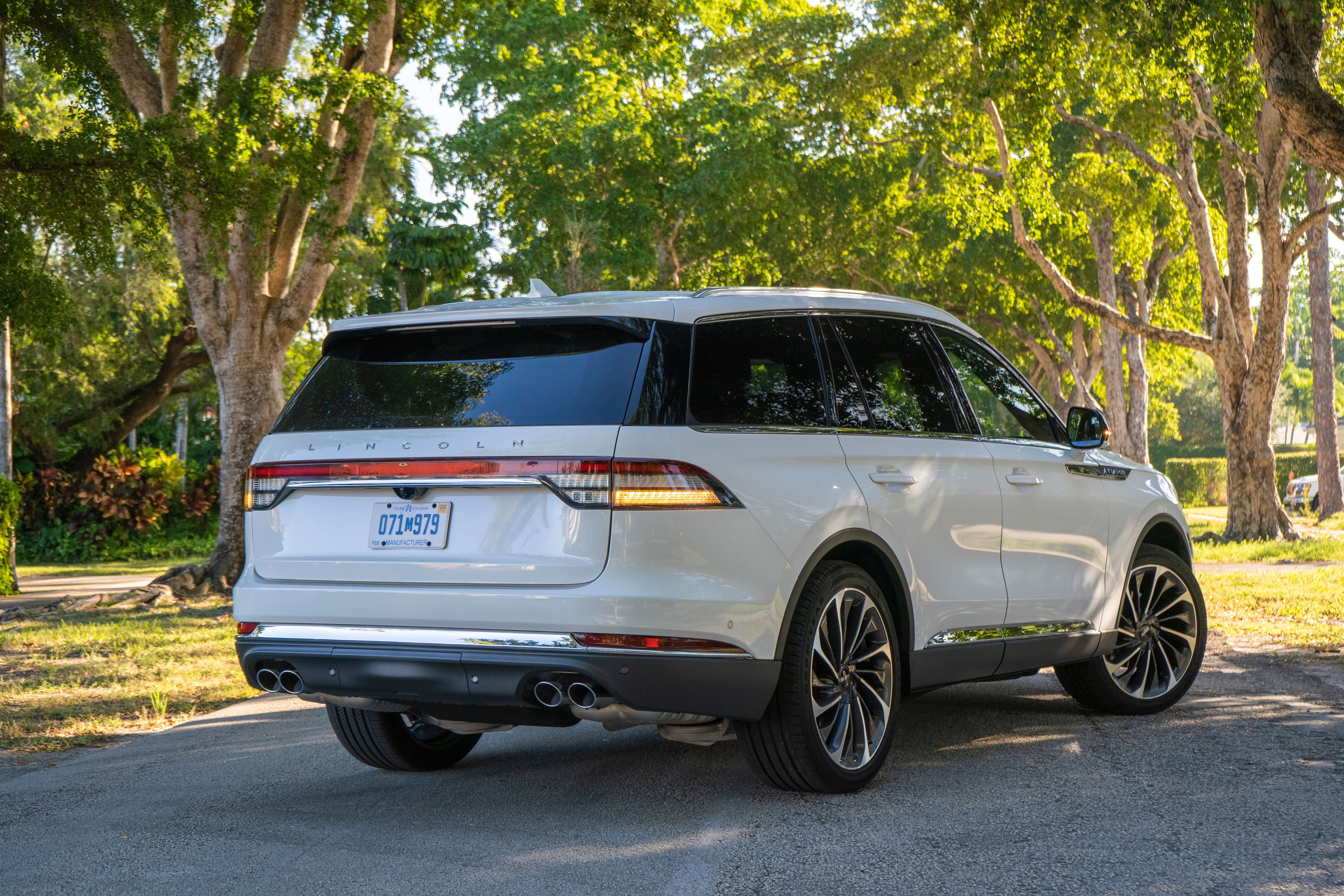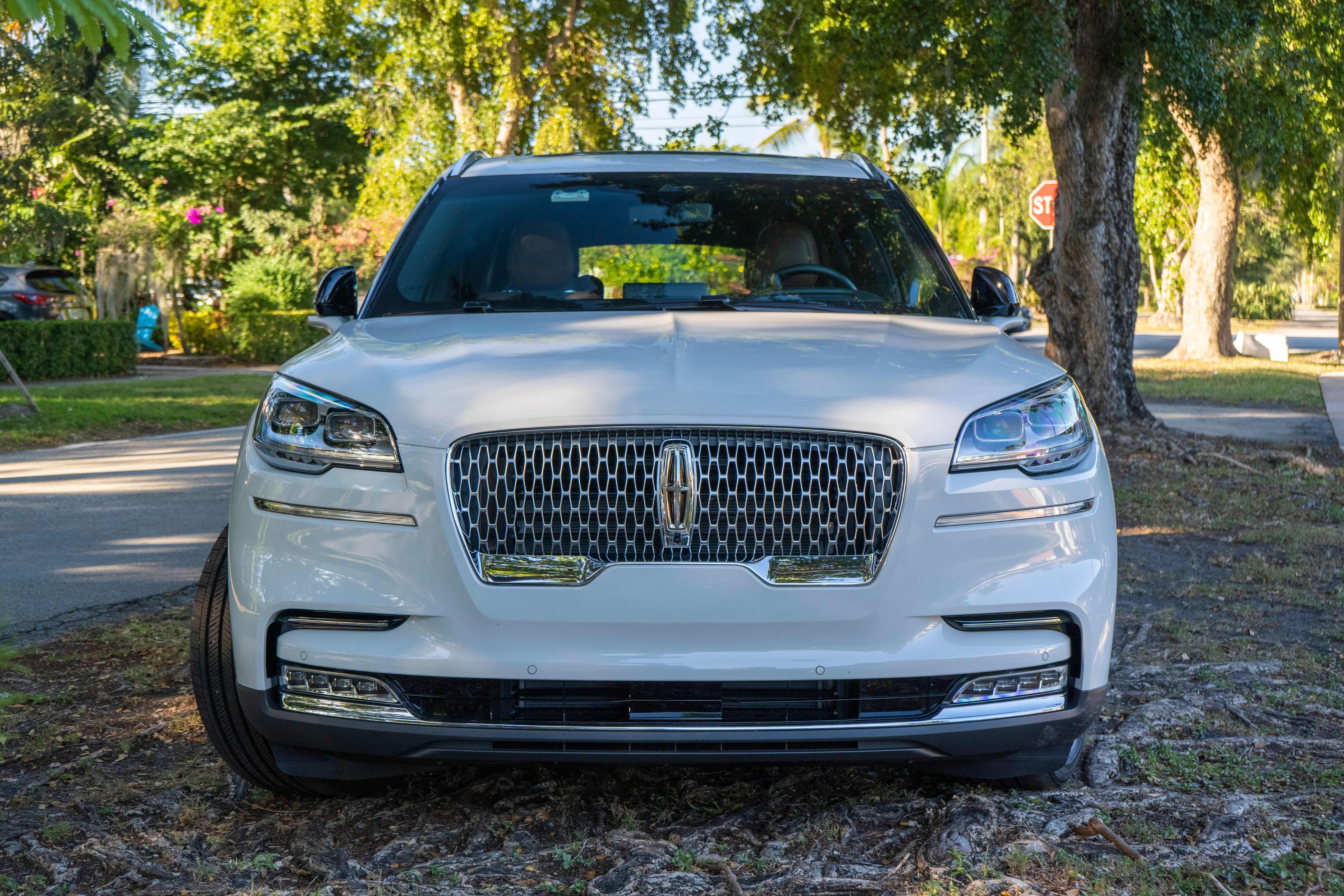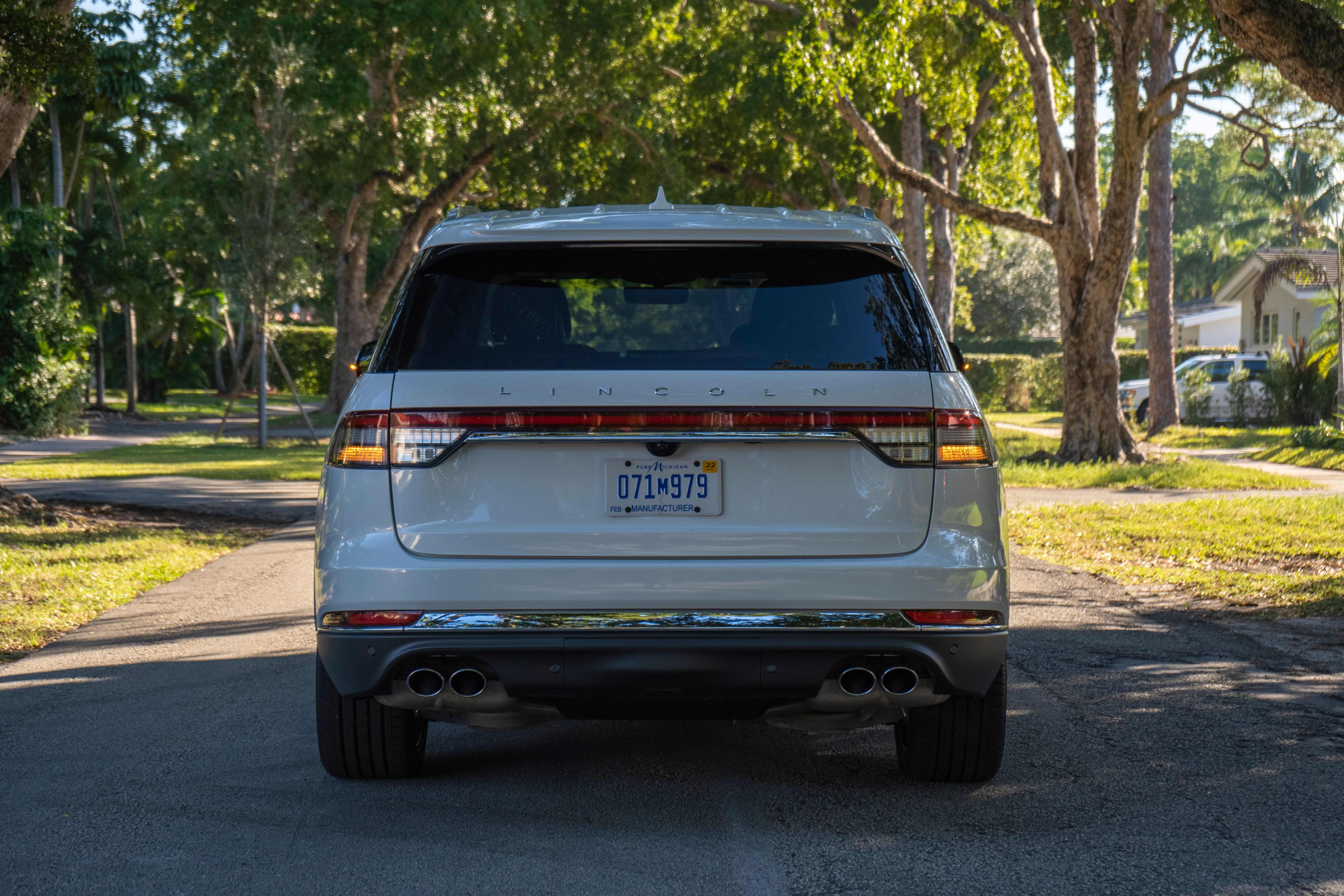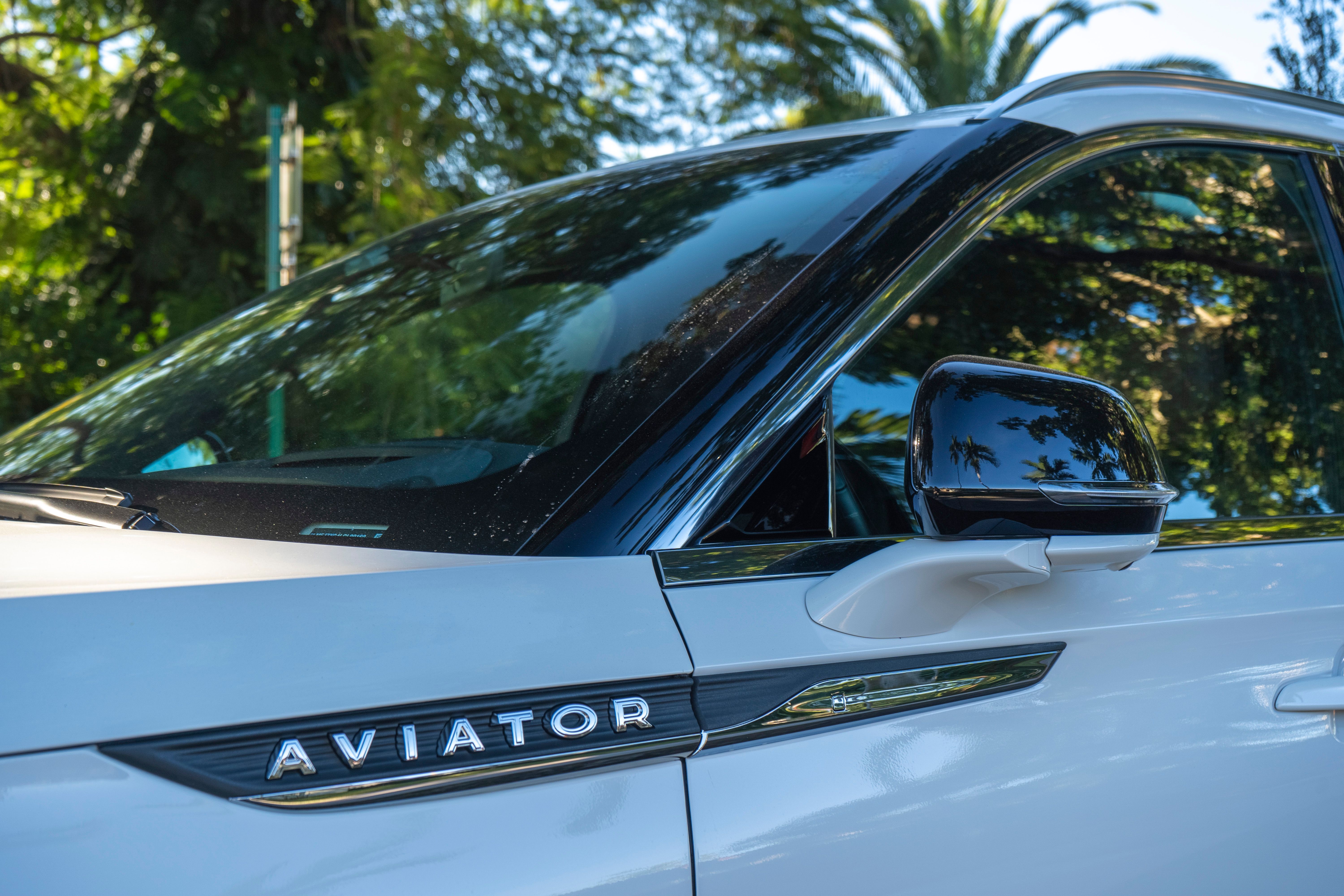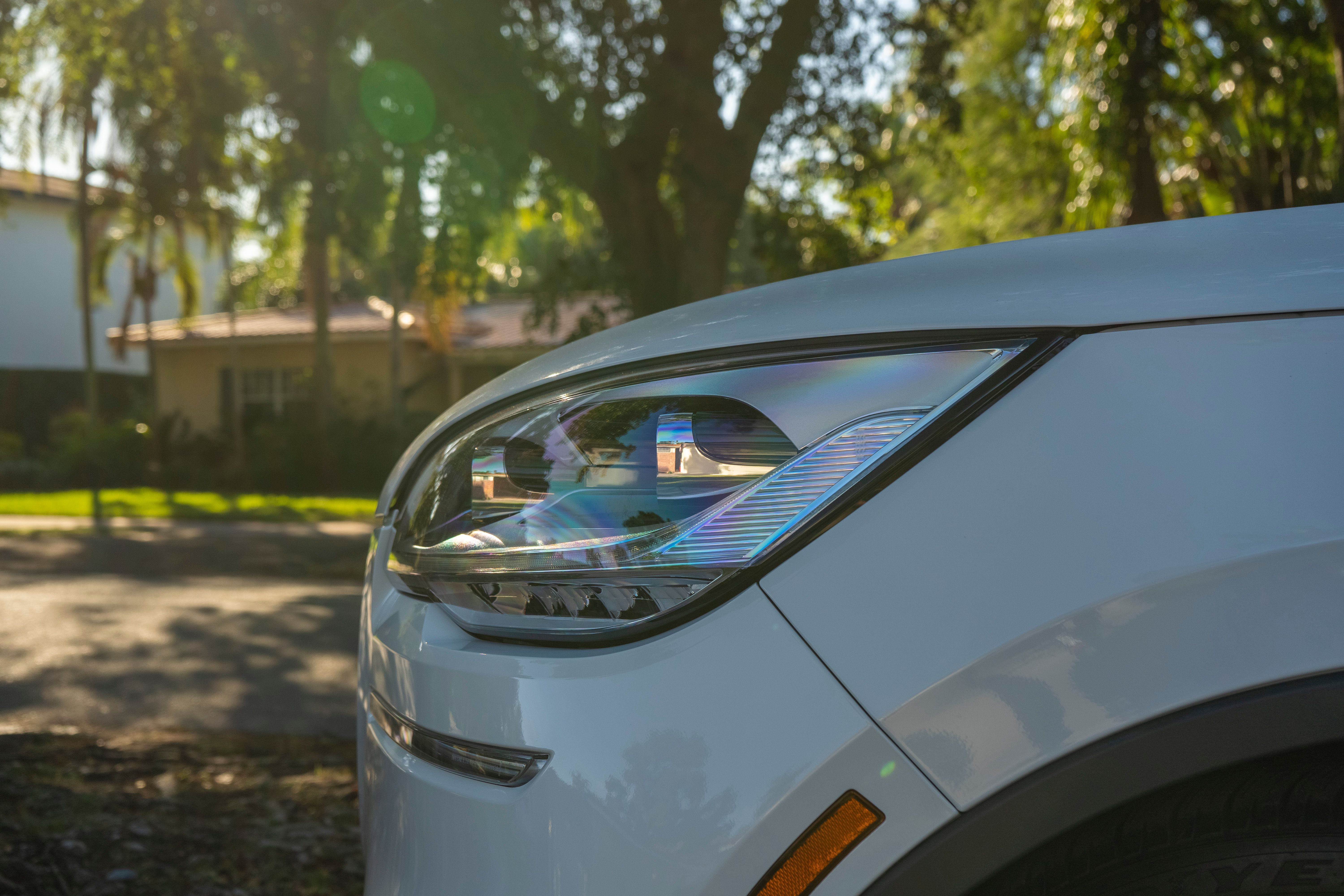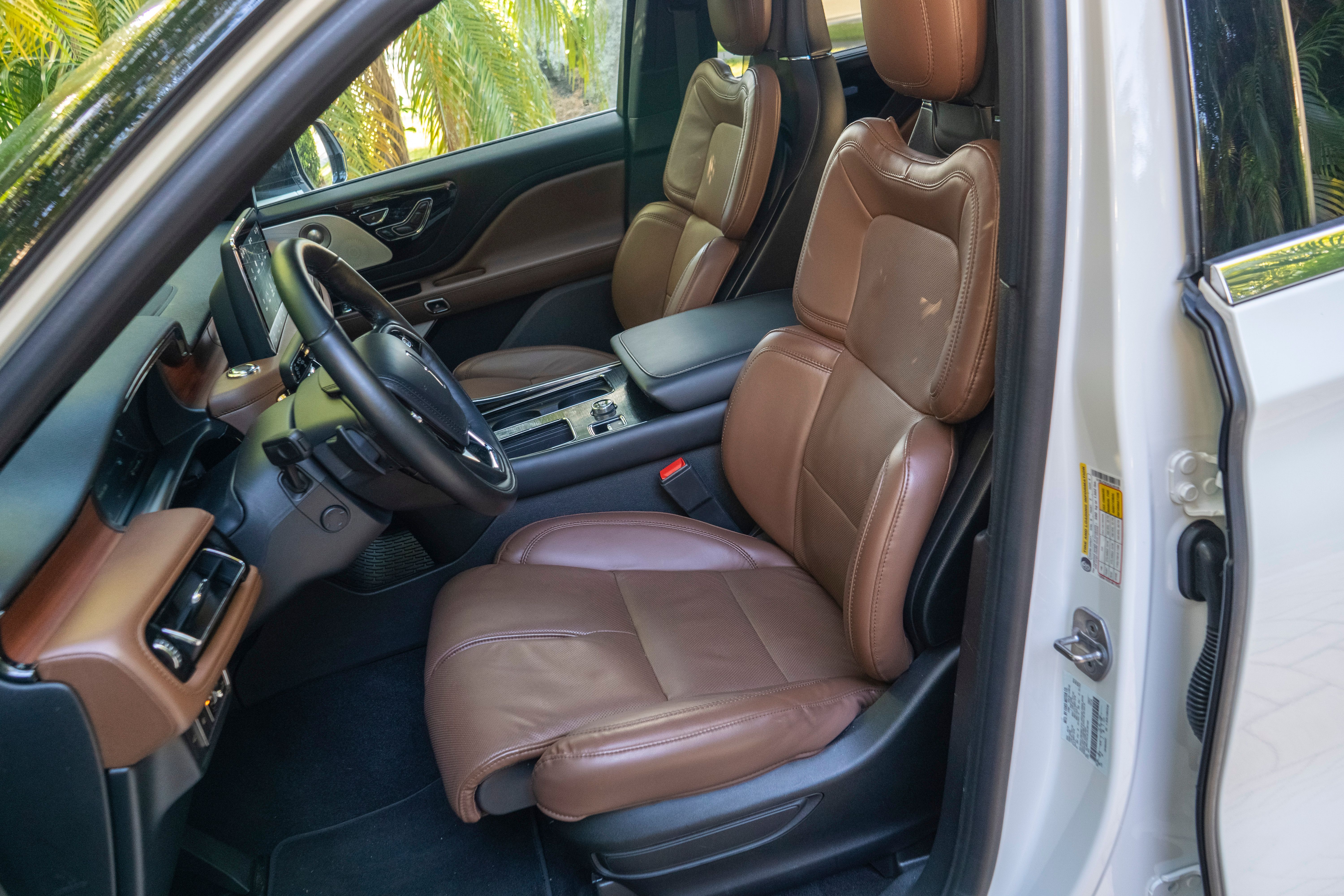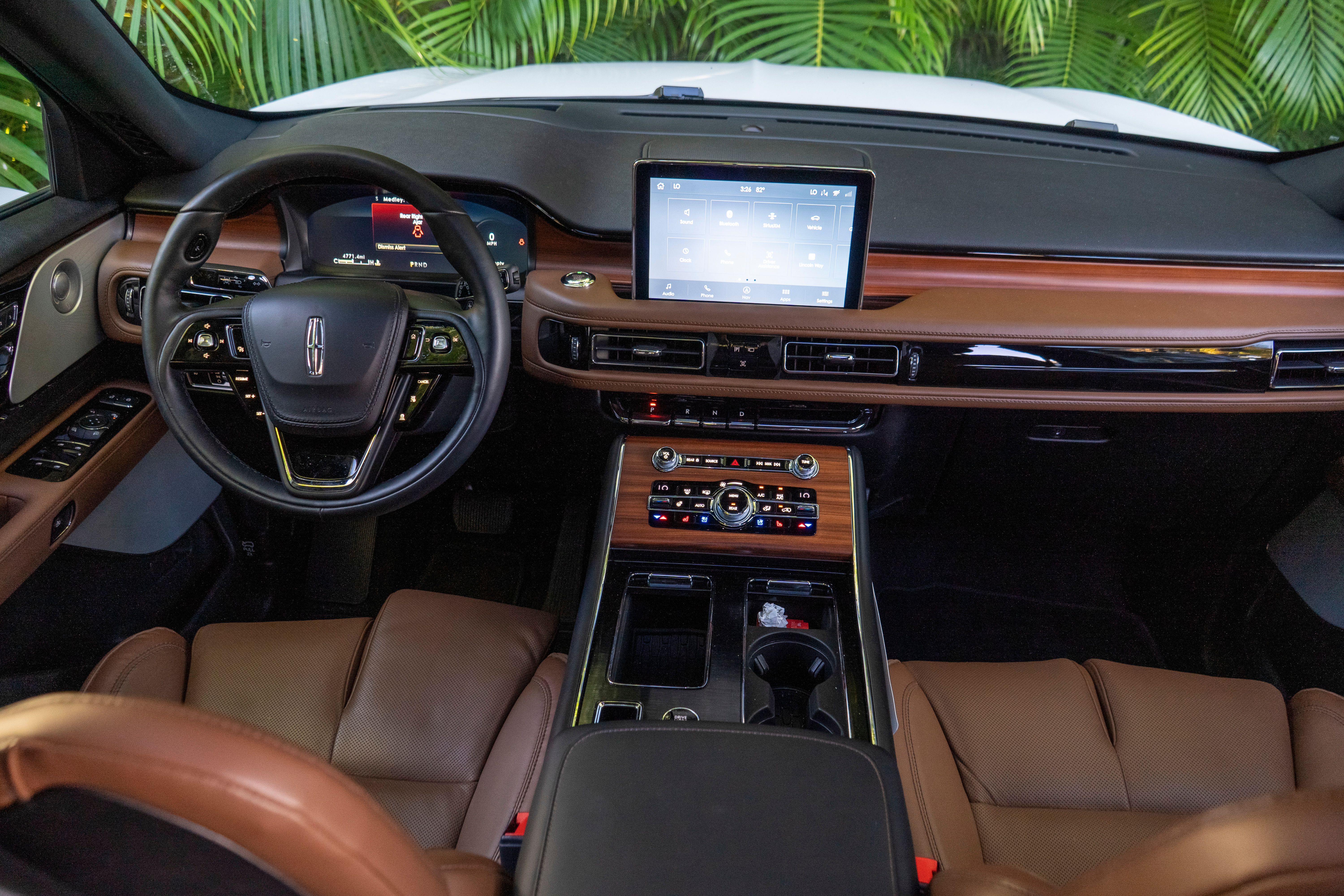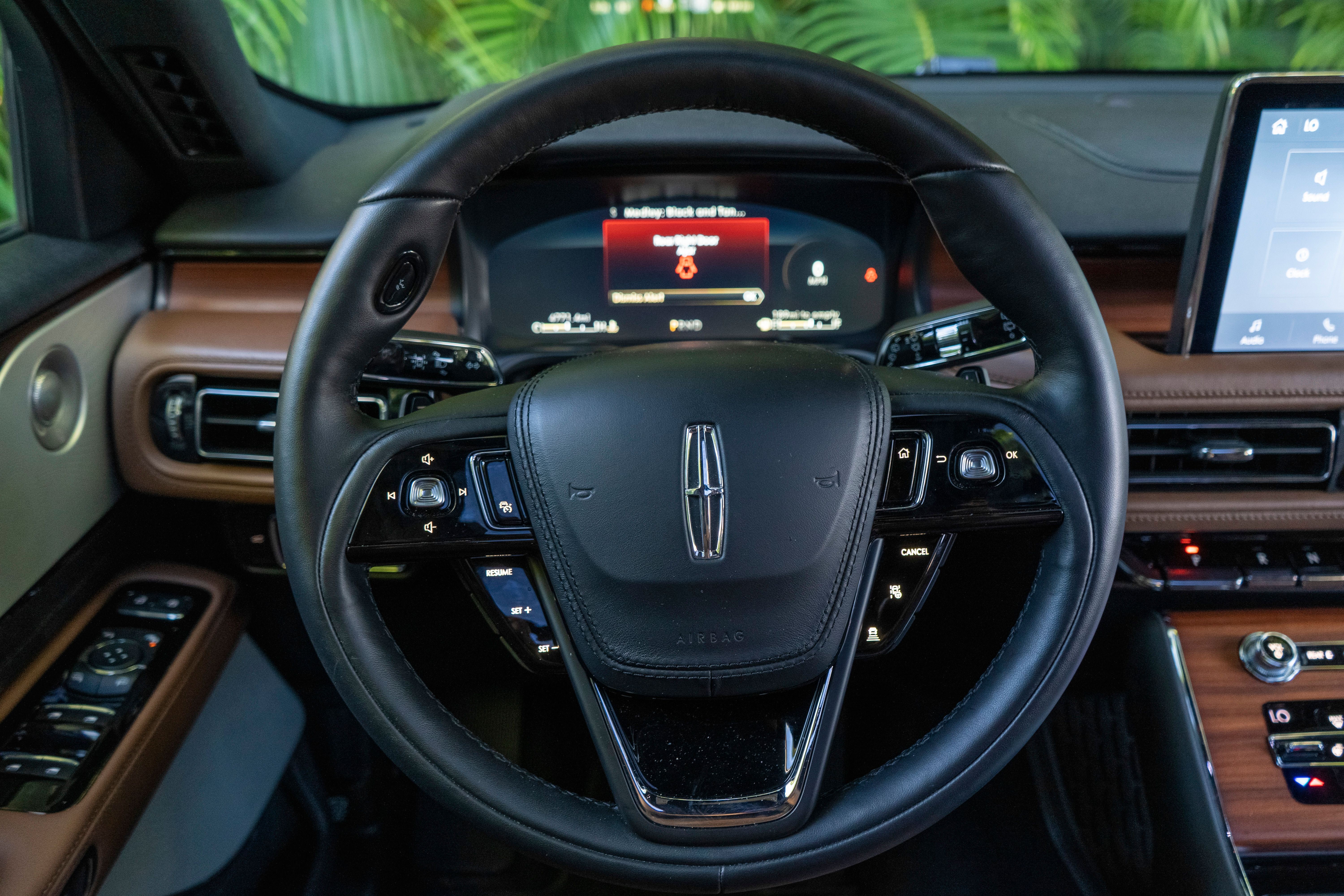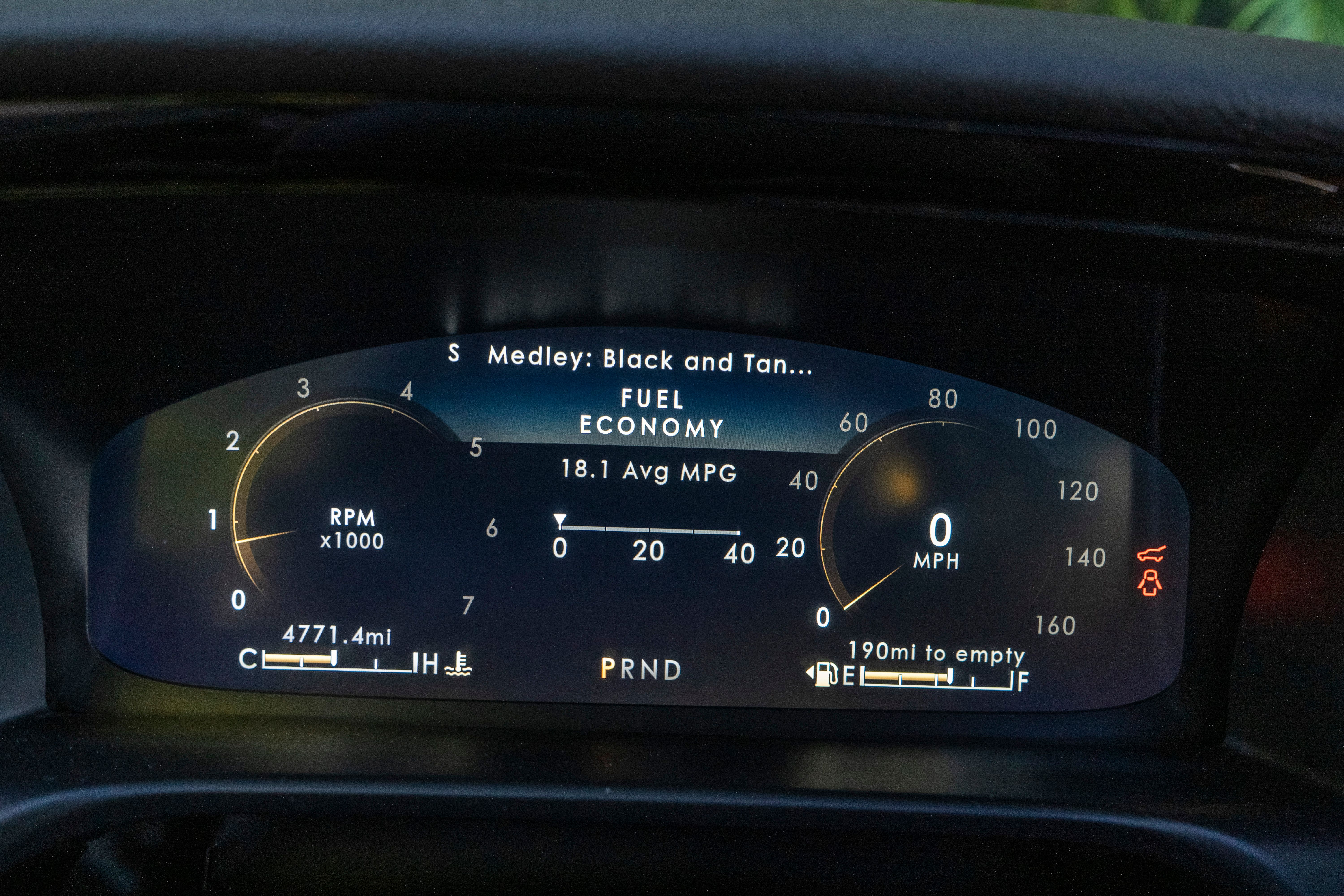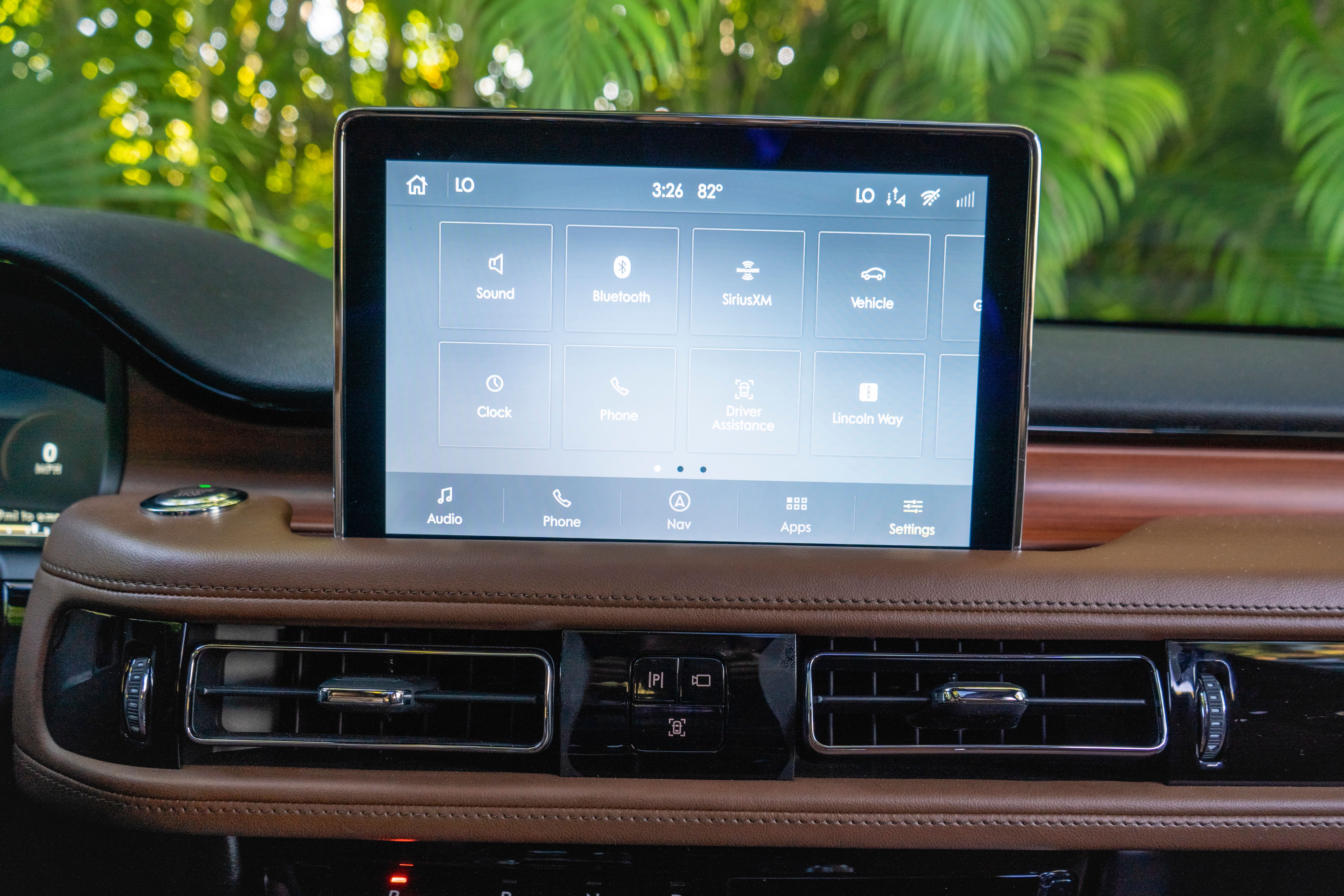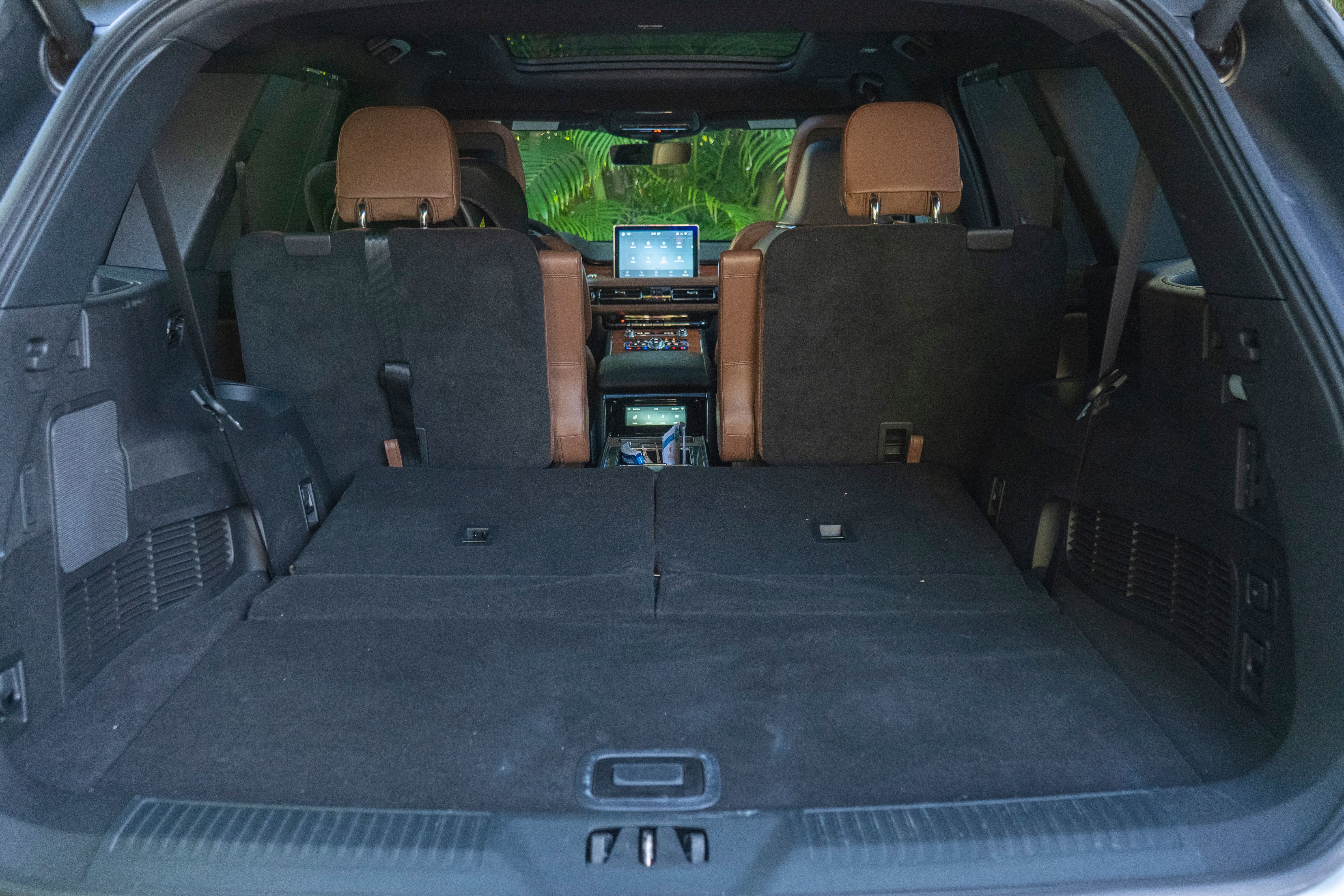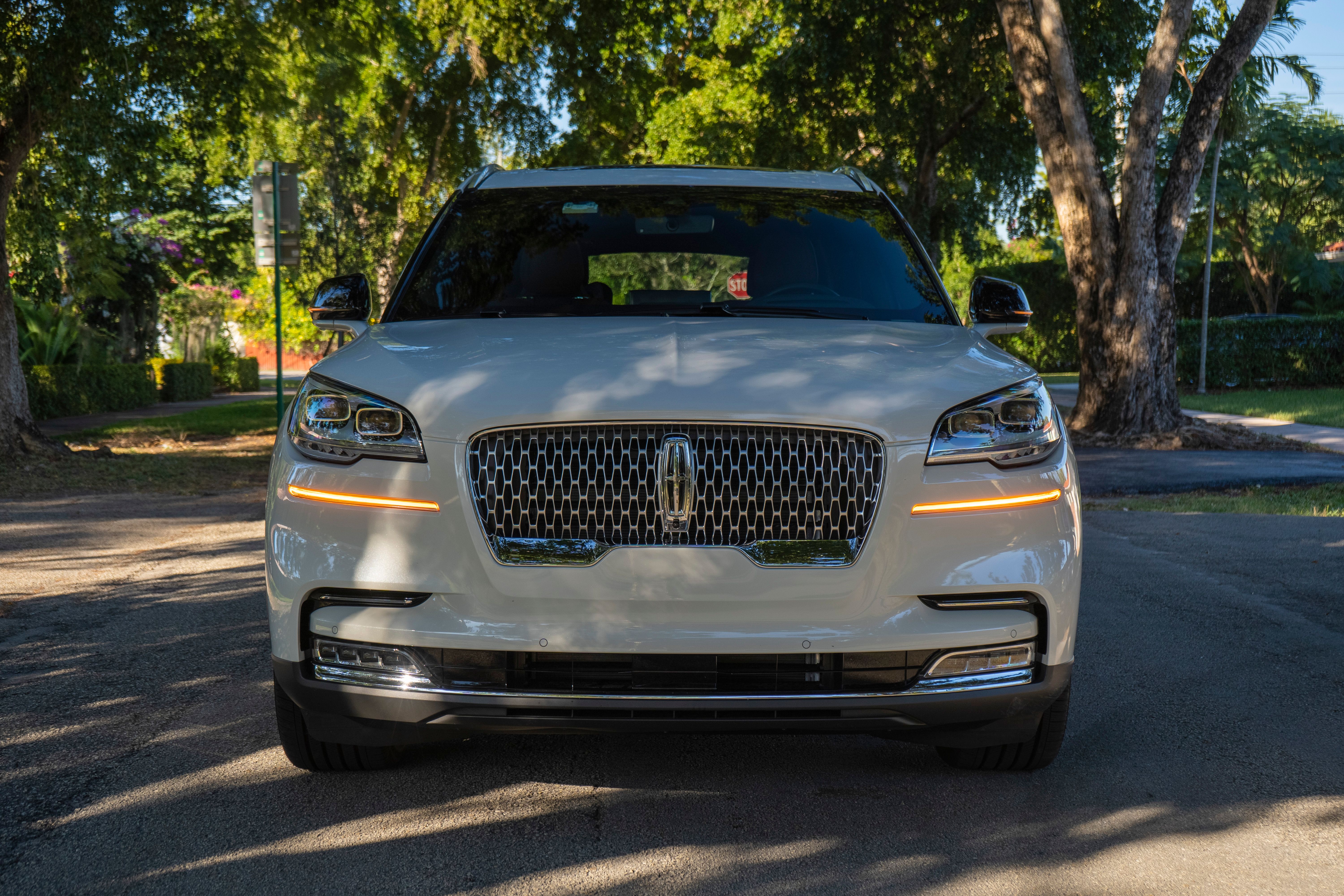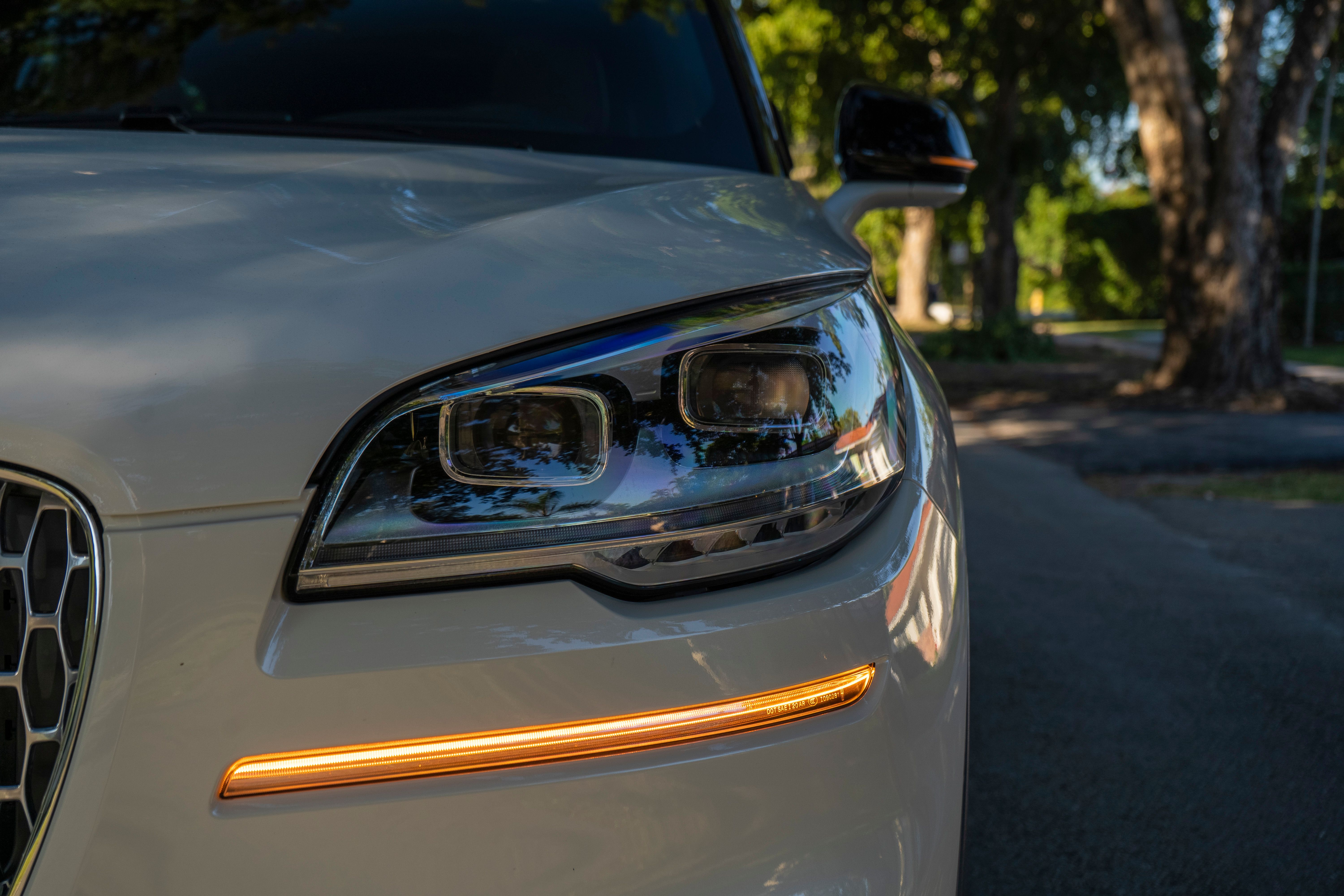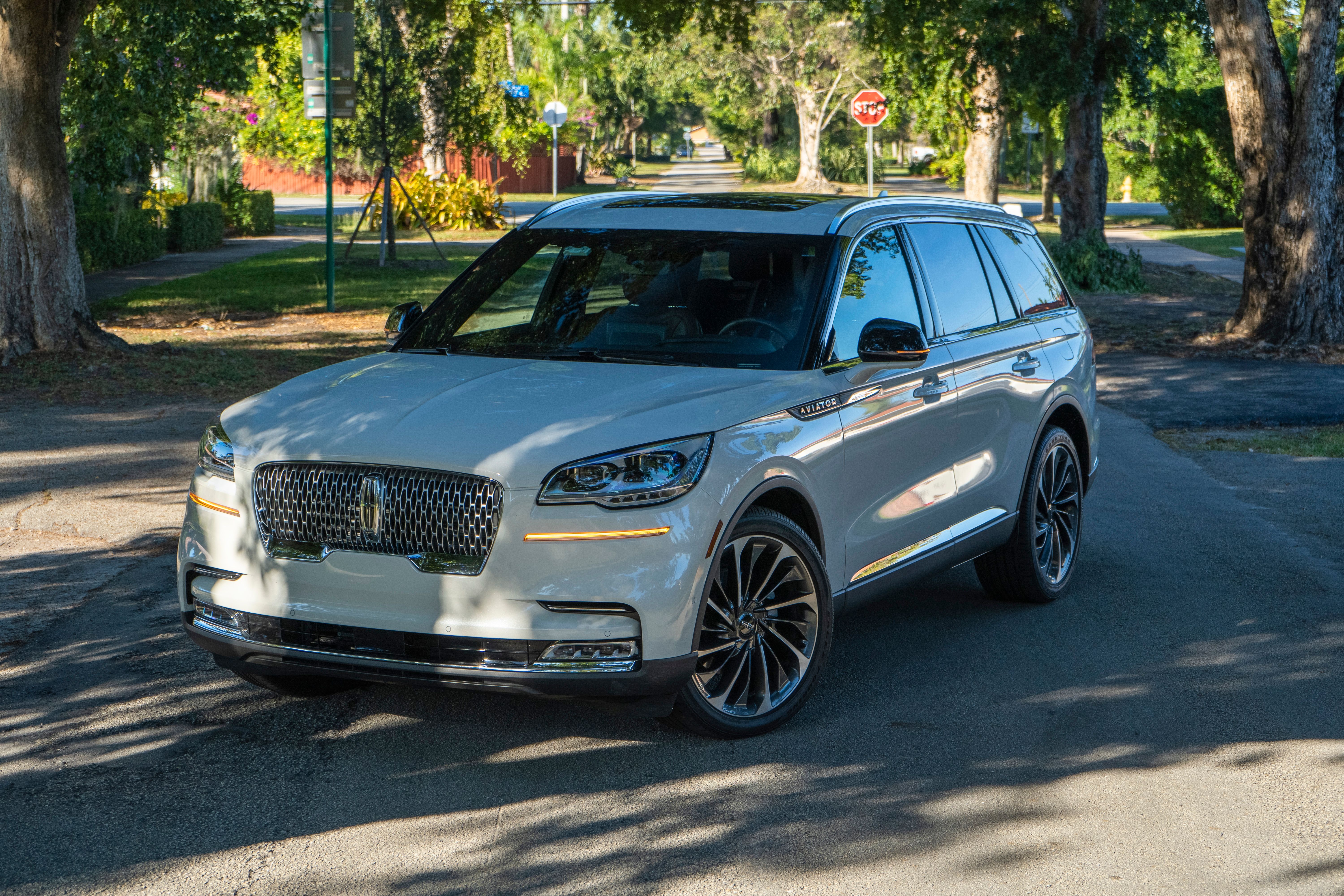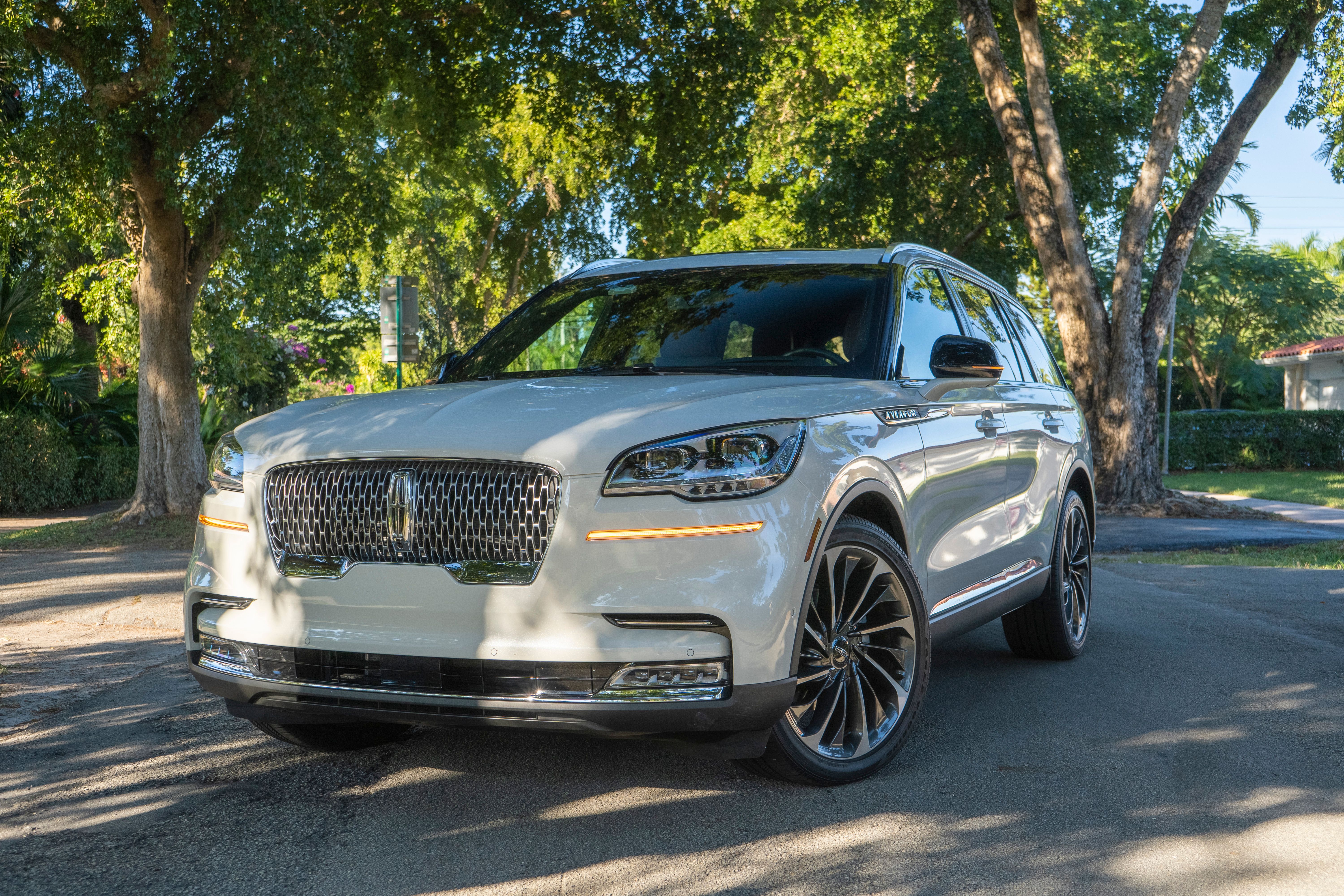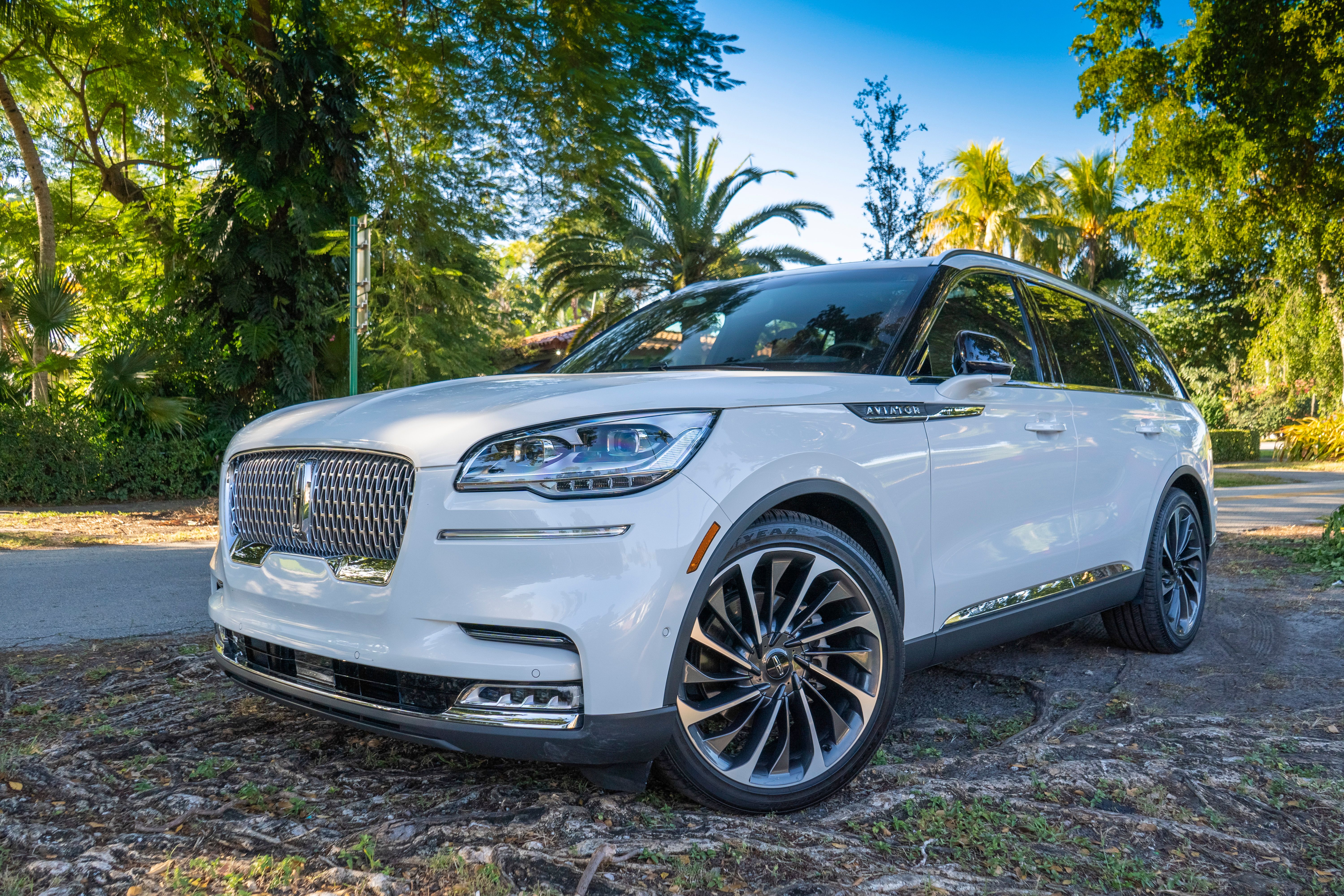In recent decades, few Lincolns have been known for excellence. The company has largely settled for making marginally nicer Fords at marginally higher prices. That’s not a bad niche to occupy — for example, recent Lincolns like the MKZ sedan and Nautilus crossover provide comfortable interiors, rich leather, lots of features, and a quiet ride for less money than sportier, more opulent Mercedes-Benz or BMW competitors — but this approach did little for the brand’s prestige.
Now, Lincoln is undergoing a renaissance. New Lincolns do still borrow from Fords mechanically. But starting with the redesigned 2018 Navigator, the brand’s models have been packing a greater visual punch, differentiating themselves from their Ford cousins and from the competition. One of the latest beneficiaries is the new 2020 Lincoln Aviator, a luxury version of the Ford Explorer that Lincoln had last sold in 2005.
The new Aviator stands comfortably apart from the Explorer, sharing its family-friendly seven-seat layout and its new rear-wheel-drive-based platform, but with a unique and eye-catching exterior and interior design. From its striking looks to its standard 400-horsepower engine to a host of thoughtfully executed details, this isn’t a Lincoln that aims for being merely “acceptable” or “pretty good.” Some buyers might wish for sportier handling, a few details could be improved, and our test car’s $76,310 MSRP feels steep. But when you stay closer to the $51,100 base price, the new Aviator is a head-turning combination of performance, seven-passenger seating, and stunning design.
2020 Lincoln Aviator - Driven
- Make: Array
- Model: 2020 Lincoln Aviator - Driven
- Engine/Motor: flat-6
- Horsepower: 400
- Torque: 415
Lincoln Aviator Overview
Once upon a time, the Lincoln Aviator roamed our fair streets. It didn’t last long in the market — it was produced only from 2002 to 2005 — and it barely made a blip in our memories despite sharing a lot of its underpinnings with the third-generation Ford Explorer. The Aviator’s run ended on a whimper and we didn’t see or hear about the nameplate until the 2018 New York Auto Show. That’s when Lincoln unveiled a prototype version of what would end up becoming the second-generation Aviator. Ford’s decision to return Lincoln to the vanguard of American automotive luxury included the green light to bring back the Aviator, completing what is now Lincoln’s three-headed luxury SUV lineup. The mighty Navigator still retains its top-of-the-class status, but it’s now joined in the lineup by the Aviator and the Nautilus, the latter of which sits as Lincoln’s entry-level luxury SUV.
Where Lincoln — and Ford, by extension — failed in its attempt to give the first-generation Aviator a proper platform to succeed, the luxury automaker is determined not to make the same mistake twice. As such, the new Aviator was developed with the proper objective of giving the model its own identity. No longer is the Aviator an Explorer poser wearing a different badge. The SUV is convincingly upscale through its own merits. It also comes with a smorgasbord of modern tech features, and, more importantly, a muscle flexing twin-turbo V-6 engine that can hold its own against its newfangled rivals in the mid-size luxury SUV segment.
Once upon a time, the Lincoln Aviator was deemed an afterthought and a punchline. That’s no longer the case. The new Aviator has arrived, and it’s more than poised and ready to bring some luster back to its name.
How Big is the Lincoln Aviator?
Even though it has a big brother in the Lincoln Navigator to call upon, the Lincoln Aviator is far from what you’d call a small SUV. In fact, it’s one of the largest SUVs in its class, a distinction it earns in part because of the architecture it shares with its distant cousin, the ever-so-popular Ford Explorer. The Aviator’s size is helped by its design, particularly the swollen fenders and the softer roofline, at least compared to the Navigator. There’s a presence to the Aviator that’s impossible to miss, though that’s not the only reason why the SUV looks big. The Aviator looks big because it is big when you compare it to some its rivals.
2020 Lincoln Aviator exterior dimensions
|
Length |
199.3 |
|---|---|
|
Width |
79.6 |
|
Height |
69.8 |
|
Wheelbase |
119.1 |
|
Front Track |
66.9 |
|
Rear Track |
66.9 |
The SUV measures 199.3 inches long. It’s almost five inches longer than the 194.9-inch Volvo VC90. The Audi Q7, one of the biggest SUVs in its segment, is only 0.3 inches longer than the Aviator. Where the Lincoln SUV falls short in length compared to the Q7, it makes up for in kind with width and height measurements of 79.6 inches and 69.8 inches, respectively. Those dimensions beat out the Q7, which has a width measurement of 77.5 inches and a height measurement of 68.5 inches. Somewhat surprisingly, the XC90 is also wider than the Q7 — 79.1 inches — but not as wide as the Aviator. It’s also taller by 0.1 inches with a height measurement of 69.9 inches.
The Aviator’s size is important, especially in a segment where interior space is a premium. On that end, it beats out both the Q7 and XC90 handily, establishing itself as a presence in the mid-size luxury SUV segment, literally and figuratively.
Lincoln Aviator Interior Design
The 2020 Lincoln Aviator has one of the most well-appointed interiors of any SUV in its class. It helps, too, that space isn’t an issue, but as far as luxury styling goes, the Aviator can compete with some of the most stylish European SUVs in the market. For one, there’s enough satin and brushed metal accents in the Aviator’s interior to make you feel like you’re getting wrapped in a warm embrace by these premium materials. Chrome is also present in the cabin, though maybe more than some would probably like. Still, the Aviator doesn’t lack in luxury, and that’s even more evident if you go for the mid-level Reserve trim where premium leather comes standard or the range-topping Black Label that’s available with themed interiors.
The front bucket seats are some of the best you’ll find in the market. Lincoln’s Perfect Position seats are heated, ventilated, and offer a range of massage options. They can also be adjusted in 30 different directions, which is really too much for most people. Second-row bucket seats are also available as options, and they, too, are comfortable for luxury SUV standards. Should you wish, you can add heating and ventilation in them as options. Opt for the standard second-row seats and your tab wouldn’t be as high, but you are compromising on the amount of space and comfort that those captain’s chairs provide. The third-row seats are what they are. They're not particularly spacious and the comfort levels leave a lot to be desired, especially if adults sit there.
How How Big is the Lincoln Aviator’s Interior?
Space isn’t an issue when it comes to the Aviator. That’s especially true for passenger room in the first and second rows. Ample space comes in the form of generous headroom and legroom space in those rows. In fact, the Aviator boasts more first-row headroom space - 40.3 inches — than the Audi Q7 and Volvo XC90, which returns 39.9 inches and 38.9 inches of space, respectively. It’s a similar story in the second row where the Aviator offers as much as 39.7 inches of space compared to the Q7 — 38.8 inches — and the XC90 — 38.5 inches.
2020 Lincoln Aviator interior dimensions
|
1st Row Headroom |
40.3 |
|---|---|
|
1st Row Leg Room |
43 |
|
1st Row Shoulder Room |
61.5 |
|
1st Row Hip Room |
58.5 |
|
2nd Row Headroom |
39.7 |
|
2nd Row Leg Room |
39 |
|
2nd Row Shoulder Room |
61.3 |
|
2nd Row Hip Room |
58.5 |
Legroom also favors the Lincoln SUV, and compared to the Q7 and XC90, it’s not even close. The Aviator comes with 43 inches of legroom space in the first row compared to 41.7 inches in the Q7 and only 40.9 inches in the XC90. Form follows in the second row where the Aviator’s 39 inches of space nips the Q7’s 38.8 inches of space and the XC90’s 37 inches of space.
The figures favor the Lincoln Aviator, and justifiably so. But beyond those numbers, the SUV’s first and second rows offer the kind of headroom and legroom space you’d want in an SUV of its size. But these rows also aren’t particularly wide so it might not be as comfortable for some people as it would be for others.
Lincoln Aviator Cargo Room
A big part of being a big SUV is that, theoretically, there should be enough space to accommodate ample amounts of cargo. Throw away that theoretical part because that’s exactly what you’ll get in the Aviator. Lincoln’s mid-size luxury SUV boasts one of the most spacious cargo rooms among class rivals. Behind the rear seats, the Aviator has 18.3 cubic feet of cargo space. That’s far and away more space than what rivals like the Audi Q7 — 14.8 cubic feet — and the Volvo XC90 — 15.8 cubic feet — have to offer.
Push the rear seats down and the Aviator’s cargo space grows to 41.8 cubic feet of space. Once more, you’re looking at more space at your disposal compared to what you’ll get from the Q7, which can only offer 37.5 cubic feet of cargo room. Meanwhile, the XC90 matches the cargo space of the Aviator — 41.8 cubic feet — when its rear seats are folded.
Speaking of the XC90, give Volvo credit for offering 85.7 cubic feet of cargo room when the second and third rows are folded. That’s actually more space than what the Aviator can offer — 77.1 cubic feet — and a lot more space than what the Q7 has at its disposal — 71.6 cubic feet — when its second and third row seats are folded flat.
In any case, you won’t have to worry about cargo space with the Lincoln Aviator. There’s more than enough space in the interior to fit as many grocery bags as your heart desires.
Lincoln Aviator Infotainment System
Complementing the Aviator’s spacious and luxurious cabin is an infotainment system that has come to be known as one of Ford’s strong suits. Yes, the Aviator comes standard with the SYNC3 infotainment system. To be fair, the Sync infotainment system started out as one of the worst infotainment systems in the market. But Ford has done a great job improving it to the point that it has shed its laughing stock label and become one of the better infotainment systems in the market. It still has its drawbacks, but the version that comes standard in the Aviator is one of the SUV’s strong suits. The system comes with a 10.1-inch touchscreen, four USB screens, Apple CarPlay, Android Auto, and a Wi-Fi hot spot. It’s also connected to a 10-speaker audio system and satellite radio.
The touch screen setup — most rivals carry multiple screens — in the dashboard works to the Aviator’s benefit. It makes the dash look less cluttered and the added benefit of impressive functionality with the intuitive interface means that you can get the hang of its features faster compared to other models. The crisp graphics are a huge improvement, too, compared to previous versions of the infotainment system. Depending on how fast you are in understanding the inner workings and features of an infotainment system, SYNC3 works well enough that you might not even have the need to connect your phones to Apple CarPlay or Android Auto.
That said, SYNC3 is far from a perfect infotainment system. That’s especially true for an SUV that’s supposed to come with the best that Lincoln — and Ford — can offer. Like most systems, the Aviator’s SYNC3 can become too complicated for some people, especially among those who are not the type who can process all of its features quickly.
Lincoln Aviator Powertrain and Performance
Arguably the biggest surprise that came with the arrival of the new Lincoln Aviator was the engine it was packing. Lincoln’s mid-size luxury SUV is powered by a spirited 3.0-liter twin-turbocharged V-6 engine. While that’s normal for an SUV of its size — the Audi Q7 comes with a similarly sized engine with the same twin-turbo orientation — the Aviator’s V-6 unit produces 400 horsepower and 415 pound-feet of torque. That, quite frankly, is more power than we expected. A 10-speed automatic transmission comes standard on the Aviator and all that power is transferred either to the two front wheels or all four wheels depending on the drive type you choose.
2020 Lincoln Aviator drivetrain specifications
|
Engine |
3.0-Liter Turbo V-6 |
|---|---|
|
Fuel |
Gasoline |
|
Horsepower |
400 HP |
|
Torque |
415 LB-FT |
|
Transmission |
10-Speed Automatic |
|
Drive |
AWD |
|
Towing Capacity |
6,700 LBS |
|
Fuel Economy |
17/24/20 |
|
Curb Weight |
4,897 LBS |
|
Fuel Capacity |
20.2 Gal |
The eco-friendly among you can also opt for the Aviator Grand Touring, the specific hybrid trim of the mid-size luxury SUV. The same 3.0-liter twin-turbocharged V-6 engine can also be found under the hood of the Aviator Grand Touring, but it’s also joined by a 100-horsepower electric motor that combines to produce an output of 494 horsepower and 630 pound-feet of torque. A 13.6 kWh battery pack is also part of the set-up, providing as much as 18 miles of range in the Aviator’s Pure EV driving mode.
The Aviator’s power-packed V-6 is one of its biggest advantages over its competitors. That’s especially true when you line it up against the Volvo XC90, which only comes with a 2.0-liter turbocharged four-cylinder unit that produces 250 horsepower and 258 pound-feet of torque. Even the Audi Q7, with its 3.0-liter V-6 engine can only muster up 329 horsepower and 325 pound-feet of torque. Don’t get it wrong; both the XC90 and the Q7 provide decent power for their respective sizes. The Lincoln Aviator just has more power than you expected out of it.
How Much Can the Lincoln Aviator Tow?
The Lincoln Aviator can tow as much as 6,700 pounds. The tow rating is about average for mid-size luxury SUVs. That’s not too bad, though it’s not class-leading, either. At the very least, the Aviator can claim the ability to tow more than Volvo XC90, which can’t tow anything more than 5,000 pounds. On the other hand, the Audi Q7 has one of the highest tow ratings in the segment with its ability to tow as much as 7,700 pounds.
Lincoln Aviator Fuel Economy
When it comes to fuel economy, the Lincoln Aviator returns 18 mpg in the city and 26 mpg on the highway if it comes with front-wheel drive configuration. Opt for the all-wheel drive Aviator and those figures drop a smidgen to 17 mpg in the city and 24 mpg on the highway. Unfortunately, the Aviator’s advantages in power compromise its fuel economy. While the Lincoln does return typical ratings for its class, it falls short when compared to the fuel returns of the Q7 and the XC90. The Audi SUV returns better fuel economy numbers to the tune of 19 mpg in the city and 25 mpg on the highway. Meanwhile, the XC90’s turbo-four engine contributes to the Volvo SUV returning 21 mpg in the city and 30 mpg on the highway.
Driving Impression
Lincoln has always been known for building vehicles that ride well on the roads. As we came to find out, the Aviator was no different. Sure, the SUV is a 4,900-pound mountain on four wheels, but it is remarkably well-balanced even for its size. There’s a smoothness to the ride that will make you feel at ease behind the wheel. Very little about the way the Aviator drives is overwhelming. You can cruise on the highway smoothly and hit curvy roads the same way. Perhaps a lot of that has to do with Lincoln’s Air Glide Suspension with Dynamic Lower Entry. Not every Aviator trim is equipped with this package, and if you happen to have one of these said trim, you’ll need to fork out an extra $3,000 for the Dynamic Handling Package. It’s a lot of money sure, but the air suspension also comes with adaptive screening and a road-scanning system that’s far more useful than it sounds, as we came to realize in our time spent with the hulking SUV.
The suspension upgrades turn what is already a well-balanced mid-size luxury SUV into an even smoother ride. The aforementioned road-scanning system comes with a forward-facing camera that can detect surface imperfections anywhere from two inches to eight inches high. That information is then relayed to the air suspension system, which, in turn, compensates accordingly so you don’t have to feel a thing when you’re traveling along pothole-strewn roads. We put that to the test and the results are as advertised, maybe even better considering our expectations of what the ride would have felt like.
Lincoln Aviator Competition
Audi Q7
The Audi Q7 is one of the best mid-size luxury SUVs in the market for a reason. The German SUV has no weaknesses, at least if you don’t count the rather cramped third-row seats. Everything else, though, is top quality. The Q7 looks good and has a well-appointed interior that’s typical of most Audi models. It also boasts a some lively engines, none better than the 3.0-liter turbocharged V-6 unit that offers enough power to satisfy your road urges. The Q7 also handles like a dream and it’s remarkably agile for an SUV of its size. I know I can say the same things about the Lincoln Aviator and all of it will be true. But there’s something to be said, too, about Audi’s history of rolling out impressive SUVs. There’s a track record there that the Lincoln Aviator doesn’t have. At least not yet.
Read our full review on the 2020 Audi Q7
Volvo XC90
I’m on record as being a big fan of the Volvo XC90 so it’s a little unnerving to compare the Swedish mid-size luxury SUV to its American counterpart. Fortunately, both the XC90 and the Aviator have their own strengths and weaknesses relative to the other model. Power and performance, for example, favor the Aviator. The XC90’s four-cylinder engine is going to have a hard time competing with the Aviator’s twin-turbo V-6. That much is obvious. But what the XC90 lacks in outright power, it makes up for in fuel efficiency, something that often sits on the top of any SUV-buyer’s requirements checklist. The XC90 also benefits from having one of the classiest interiors of any SUV in its segment. The Aviator has a solid cabin, too, that’s more spacious than the Volvo’s, but I like the XC90’s interior design better. That goes for the exterior, too. I’ve yet to see mid-size luxury SUV that looks as good as the XC90. Oh, and the Volvo is also far cheaper than the Aviator.
Read our full review on the 2020 Volvo XC90
Is the Lincoln Aviator Worth the Price?
The Lincoln Aviator is not a cheap ride. Let’s get that out of the way. The base Aviator Standard trim starts at $51,100, and while it does come with the 400-horsepower, twin-turbocharged V-6 engine and a 10-speed automatic transmission, it’s also just rear-wheel drive. If you want to go all-wheel drive, you’re going to have to add an extra $2,500. It’s the same thing with adaptive steering. It’s not standard on the Aviator Standard so that’s another $3,000 going in your shopping cart.
If you want something more rounded, the Aviator Reserve starts at $56,190. Picking this trim means that second-row captain's chairs, genuine leather upholstery, and 12-way power-adjustable front seats, among other things, now come standard. All-wheel drive and adaptive suspension, on the other hand, remain as options.
Those two features do come standard on the Aviator Grand Touring. This trim also comes with a plug-in-hybrid powertrain that boosts output to 494 horsepower and 630 pound-feet of torque. On top of that, the Aviator Grand Touring also comes with 30-way power-adjustable front seats, massaging front seats, and a 28-speaker Revel 3D audio system. All these items and equipment come standard, justifying — probably — the $68,800 starting price.
The range-topping Black Label and Black Label Grand Touring trims cost $77,695 and $87,800, respectively. Both trims come with everything that’s been mentioned as standard and a few styling options that are not available in the lower trims. At this point, choosing between these two models means that you’re willing to go all-out and spend on the Aviator.
Final Thoughts
I’m tempted to say that the second-generation Lincoln Aviator is a return to form for the nameplate, but its predecessor really didn’t do much to elevate the Aviator nameplate in the first place. Still, I’m happy that Lincoln brought the name back, and, at least this time, it developed an SUV that can justify its place in Lincoln’s new SUV pecking order. The Aviator checks a lot of boxes you’d want from a mid-size luxury. There’s an attractiveness tot he way it looks that complement the plush and luxurious interior. There’s only one engine, sure, but it’s a powerful one at that. Most importantly, the Aviator rides better than we expected. Part of that probably came with where our expectations were, but still, for an SUV of its size to handle the way it does on the road, it’s more than a pleasant surprise; it deserves a round of applause. The only caveat we have is the SUV’s price, but at least those who end up buying the Aviator can say that the price tags are justified this time around.

